Best zoom lenses 2025: The best picks from Canon, Sony, Nikon and more
We have rounded up the best zoom lenses with options to suit a range of cameras and photography styles.
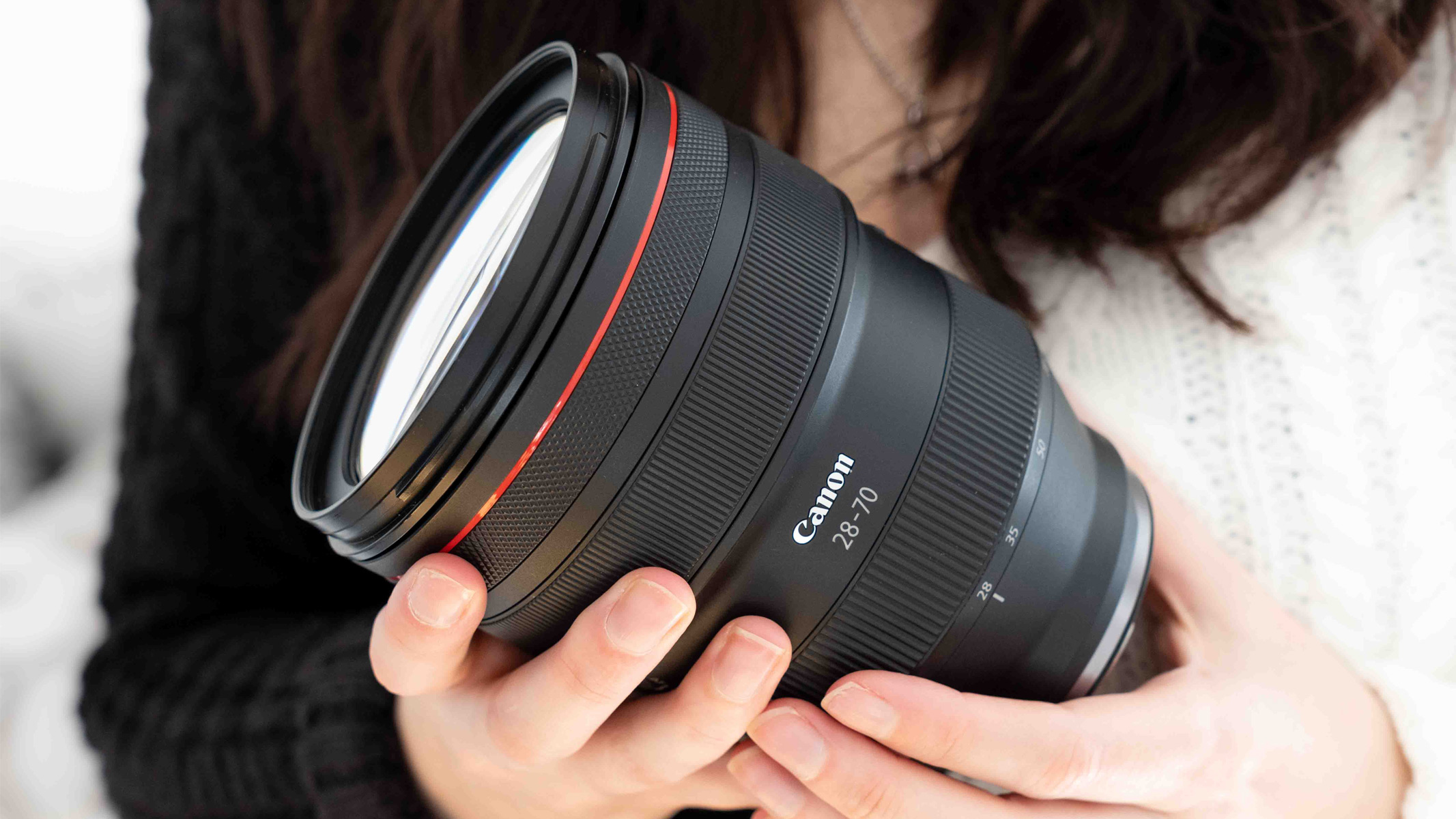
- Quick list
- The best zoom lens overall
- The best Nikon telephoto
- The best Nikon F-mount telephoto
- The best Nikon ultra-telephoto
- The best Canon wide-zoom
- The best Canon telephoto
- The best all-rounder from Sony
- The best Sony APS-C wide zoom
- The best third-party zoom
- The best for versatility
- The best third-party telephoto
- Comparison
- Best zoom lenses FAQ
- Update log
- How we test
Zoom lenses help you to get closer to your target, no matter what kind of photography you specialize in. Some can even rival telescopes for magnification power, so they're the perfect companion for budding astrophotographers. But with so many lenses out there, choosing the right one can be tricky. That's where our guide to the best zoom lenses comes in.
The one snag with using zoom lenses for astrophotography is that the Earth's rotation is more pronounced, leading to unwanted star trails. To compensate for this, it's a good idea to invest in one of the best star trackers. And if you're looking to upgrade your camera body too, we've rounded up the best cameras for photo and video.
The quick list
Below you'll find an overview of all the lenses included in this guide, with some pros and cons to help you find the ones that best suit your needs and budget. In this section, you will find links to read more detailed reviews of the products you're most interested in.
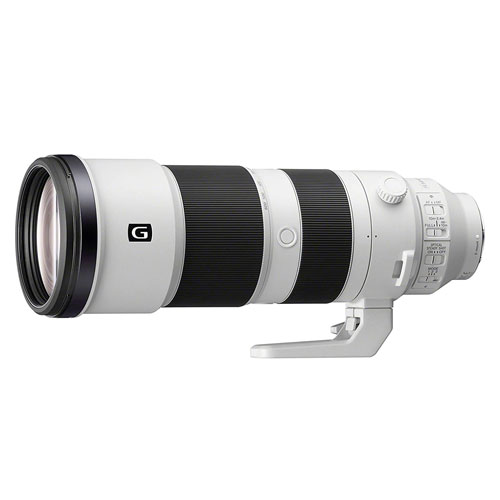
Best zoom lens overall
This telephoto zoom lens from Sony is perfect for deep sky astrophotographers thanks to its huge focal length. It is well-made and durable but comes with a hefty price tag as a result.

Best Nikon telephoto lens
Complete with a large maximum aperture and great optical image stabilization, this telephoto lens from Nikon offers edge-to-edge sharpness and is perfect for astrophotographers.
Pros
- Phenomenal image quality
- Fast autofocus, built-in stabilization
- Robust lens with excellent waterproofing
- Very versatile for astro work
Cons
- Oooof, that price
- You won’t get detailed moon shots at 200mm
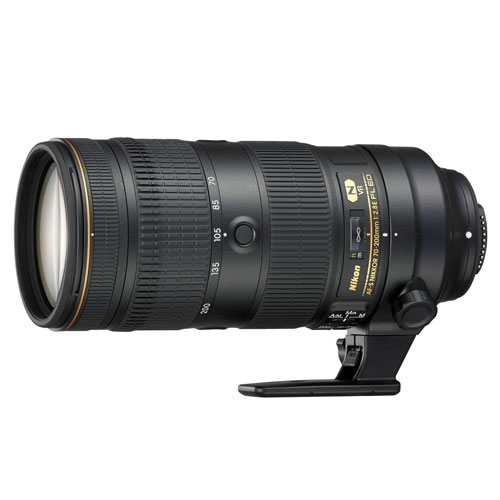
Best Nikon F-mount telephoto lens
While it's far from the newest lens on the market, this telephoto lens has a large f-stop of f/2.8 to allow plenty of light in, making it a good choice for astrophotographers with Nikon DSLRs.
Pros
- Outstanding optical performance
- 4 stops of VR for low light shooting
Cons
- A hefty price tag
- Function buttons aren’t useful for astro

Best ultra-telephoto from Nikon
Perfect for wildlife and astrophotography with an impressive 500mm focal length and constant aperture. It's not the fastest, but it represents great value at just under $1400.
Pros
- Outstanding zoom range
- Great Vibration Reduction
Cons
- Quite big and heavy
- Zoom ring takes a while to swivel
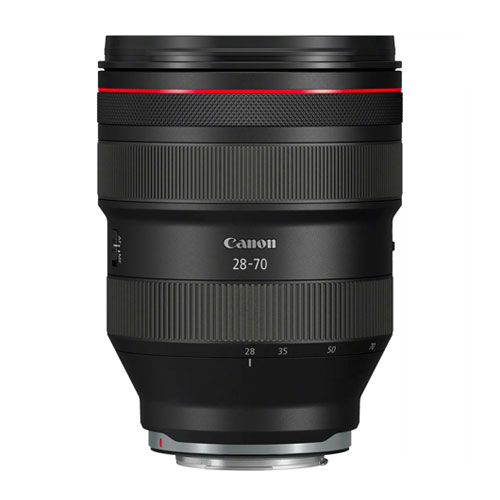
Best Canon wide-zoom
The stunning images from this lens make the high price tag entirely worth it. It boasts seriously impressive performance in low-light environments and excellent eye-tracking.
Pros
- Outstanding image quality
- Bright f/2 constant aperture
- Versatile focal length
Cons
- Big & heavy, not an ideal travel lens
- Astronomically expensive

Best Canon telephoto
This lens boasts incredible image quality, sharpness and contrast. However, the focal range is a bit limited, so you might want to consider something else for deep-sky photography.
Pros
- Stunning image quality
- Swift, silent autofocus
- Sensible button layout
Cons
- No teleconverter compatibility
- Telescoping zoom design
Load the next 5 products ↴
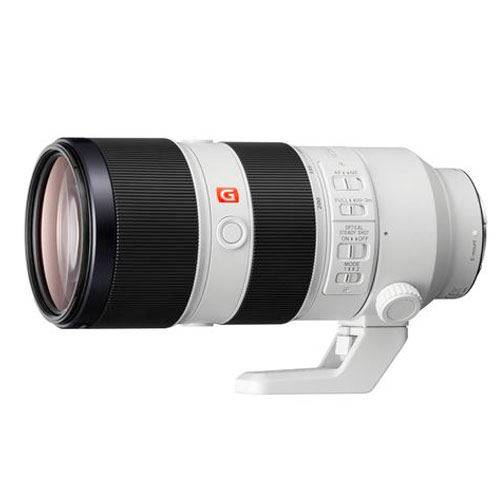
A great Sony zoom lens
A great all-rounder, perfect for anything from wildlife to landscape photography. But it might not be the best choice for astrophotographers due to the limited focal range.
Pros
- Ridiculously sharp
- Produces beautiful, color-rich images with stunning bokeh
- Near flawless tracking
Cons
- Expensive lens
- Big and heavy (though lighter than its predecessor)
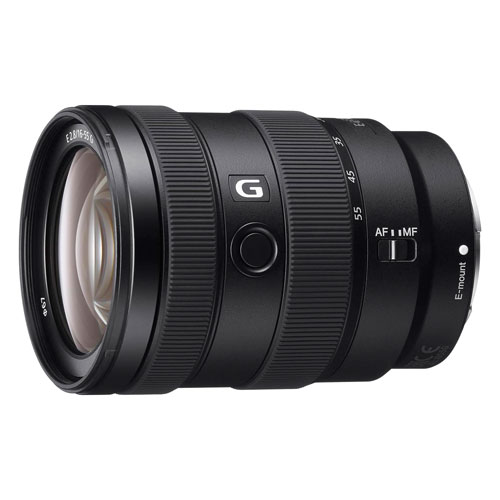
Best Sony APS-C wide zoom
The constant f/2.8 aperture allows in plenty of light even at the fullest zoom, giving bright results even in low light. It's a versatile lens that would suit a range of photography styles.
Pros
- + Good build quality
- + Excellent image quality
- + Lightweight and travel-friendly
Cons
- - Expensive
- - No OSS
- - Fair amount of distortion without corrections
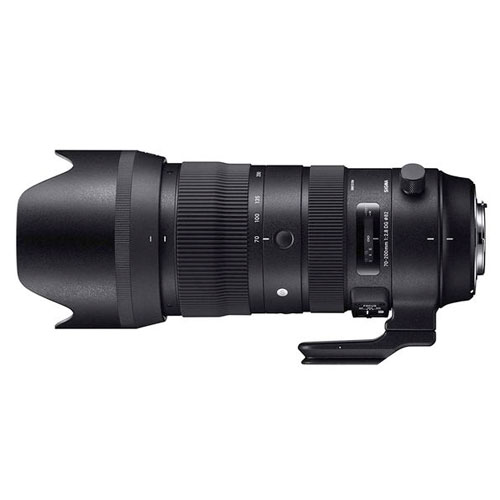
Best third-party zoom lens
This Sigma lens offers excellent quality for a fraction of the price of other brands' zoom lenses. With a constant f/2.8 aperture, it can hold its own against legacy DSLR lenses.
Pros
- Competitively priced
- Big, constant aperture
- Great image quality
Cons
- Tough to use for beginner astrophotographers
- Difficult to find another downside
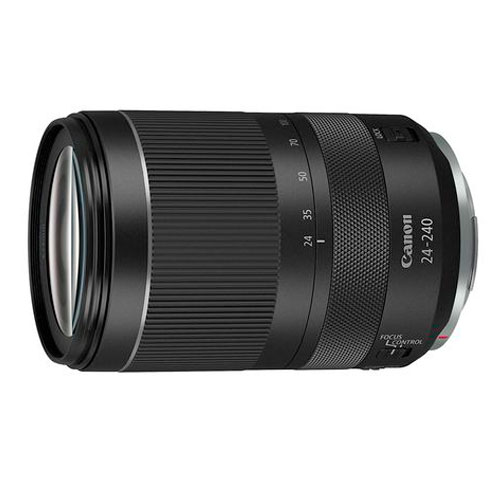
Best for versatility
This lightweight lens is great for photographers on the go. It doesn't have the longest focal or aperture range, but it renders good-quality images and boasts an excellent 10x zoom range.
Pros
- Quiet autofocusing
- 10x zoom power
- Small form factor
Cons
- Minimal weather-sealing
- Some chromatic aberration

Best third-party telephoto lens
This affordable telephoto lens has a maximum focal length of 600mm, the biggest focal range on our list. But it's heavy and the maximum zoomed-in aperture of f/6.3 can feel a bit limiting.
Pros
- Oodles of reach
- Surprisingly easy to carry
- Well made construction
Cons
- A steep learning curve for those starting out
- Small maximum aperture
- Plus size lens requires plus-size tripods
The best zoom lenses we recommend in 2023
Why you can trust Space.com
The best zoom lens overall
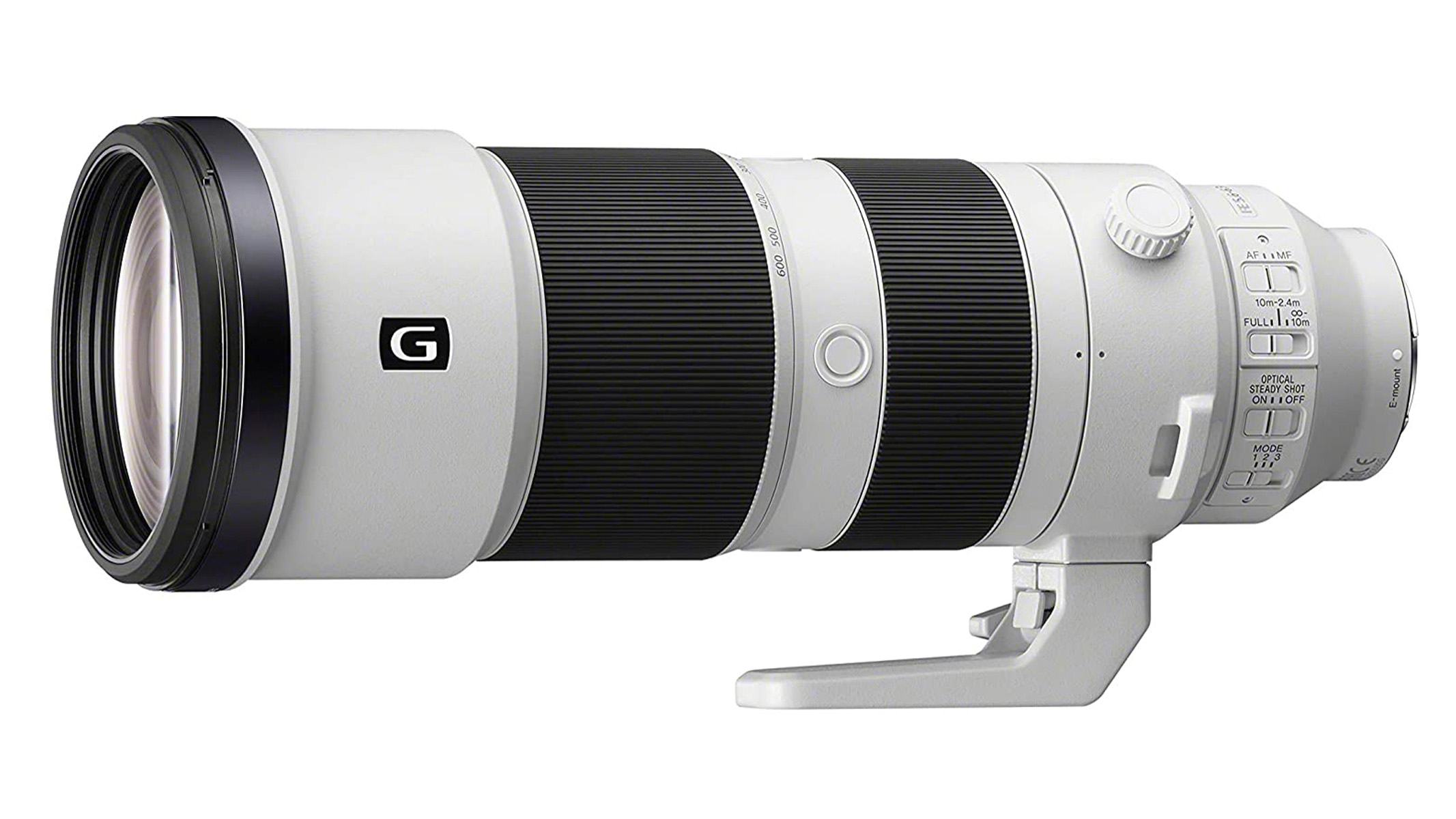
Sony FE 200-600mm f/5.6-6.3 G Master OSS
Our expert review:
Specifications
Reasons to buy
Reasons to avoid
✅ You want a versatile lens: the zoom and wide aperture means this is suitable for astro and daytime photographers alike.
✅ You can invest in a well-built lens: it has quality ergonomics and is designed very well.
❌ You're on the go a lot: At 4.7 lbs, this is a hefty piece of kit that requires a good star tracker and tripod.
❌ You're on a budget: Although it's not the most expensive lens on this list, it will still set you back close to $2,000.
❌ You want to shoot wider astro shots: The 600mm maximum zoom costs you a bit of light as the aperture can only be opened as wide as f/6.3 once you crank it in.
🔎 The Sony FE 200-600mm f/5.6-6.3 G Master OSS is a versatile telephoto zoom lens perfect for deep-sky astrophotographers and daytime photographers alike. The impressive zoom and aperture range combine to create pin-sharp images, even at 600mm zoom. However, the hefty weight means you'll need a decent tripod and star tracker to support it. ★★★★½
Topping our list of zoom lenses is a real titan of a lens from Sony. Catering to both astrophotographers and daytime photographers, this high-quality lens is perfect for capturing deep-sky images at night or for shooting wildlife, nature or sports during the day. This makes it a versatile bit of kit with a wide appeal.
Design: This lens has a couple of drawbacks. It's relatively heavy at 4.7 lbs, which can be challenging to handle when attached to a heavy camera. To achieve the best professional results, you might need to invest in a powerful star tracker, which will further increase the overall cost. In addition, you'll also need to invest in a quality tripod in order to carry this level of payload.
Performance: This is a lens that stands up incredibly well to the torture test of being shot with the aperture wide open, which is essential if you're considering using it for astrophotography. The center of the image is almost absurdly sharp, even when fully zoomed in at 600mm. The maximum zoom achieved by this lens is an impressive feature. Admittedly, using the maximum zoom does cost you a little light as the aperture can only be opened as wide as f/6.3 once you crank it in, which will cost you either shutter speed or ISO (or a bit of both).
Functionality: When you think about the potential weight of a 600mm lens with a faster aperture and the image quality that modern sensors can deliver, the trade-off is worth the price. Especially if you have a recent full-frame camera that can produce good image quality at high ISO settings. This lens provides significant magnification, opening up spectacular photographic opportunities. And with the Sony, you can get all this for under $2,000.
Attributes | Notes |
|---|---|
Design | A very hefty lens. |
Performance | Absurdly sharp, even at 600mm. |
Functionality | Offers fantastic magnification for astrophotography. |
The best Nikon telephoto
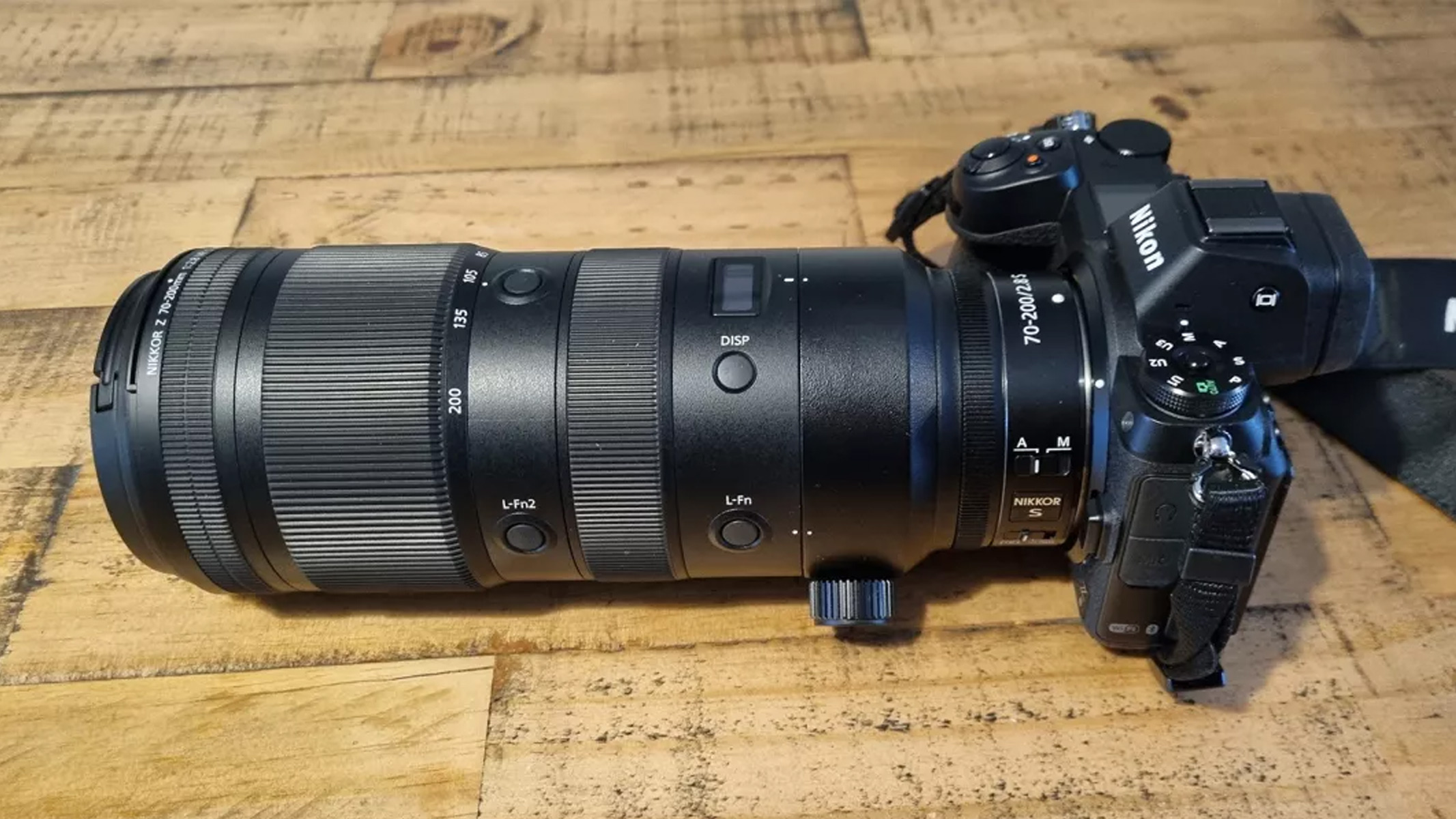

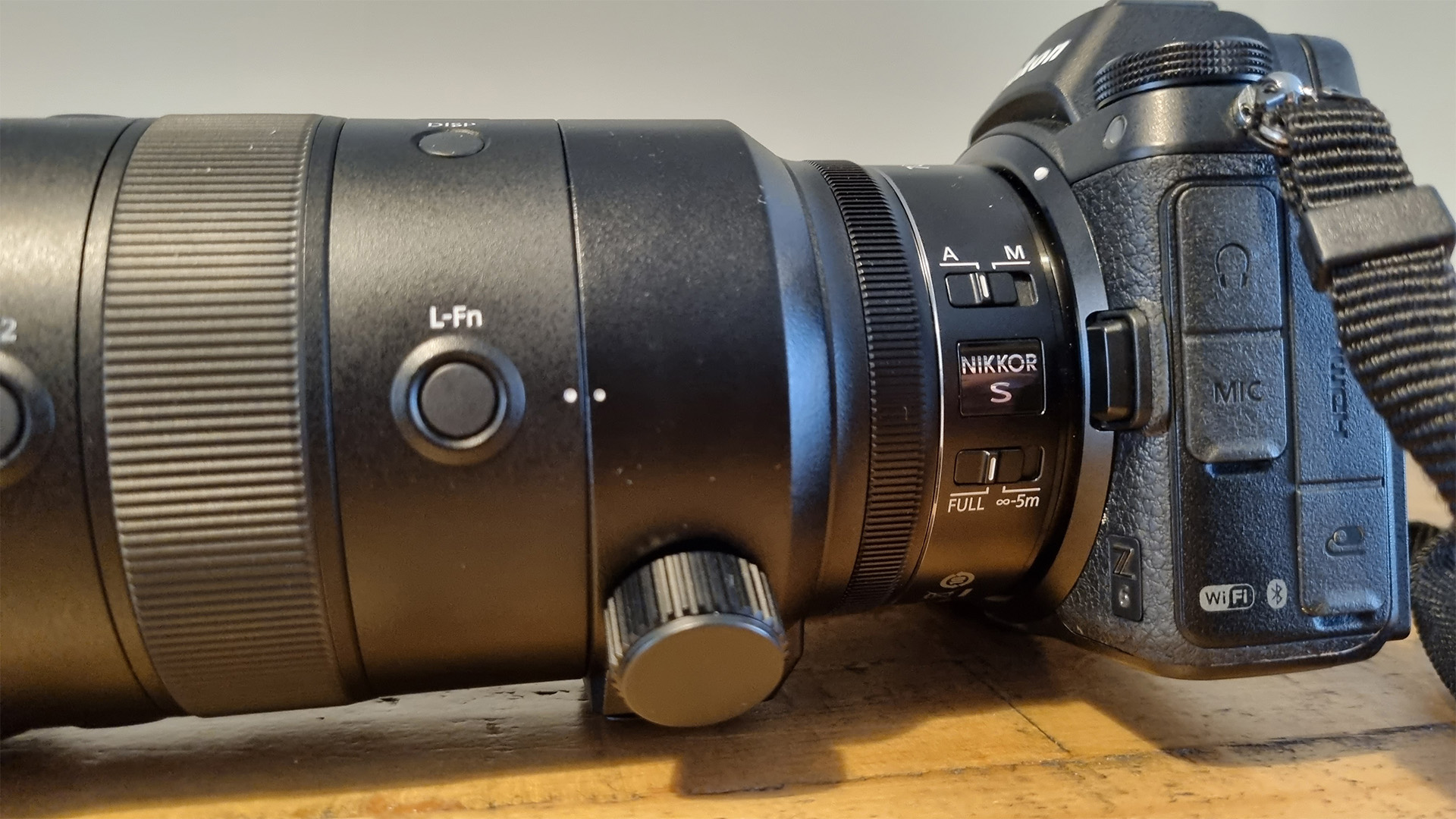
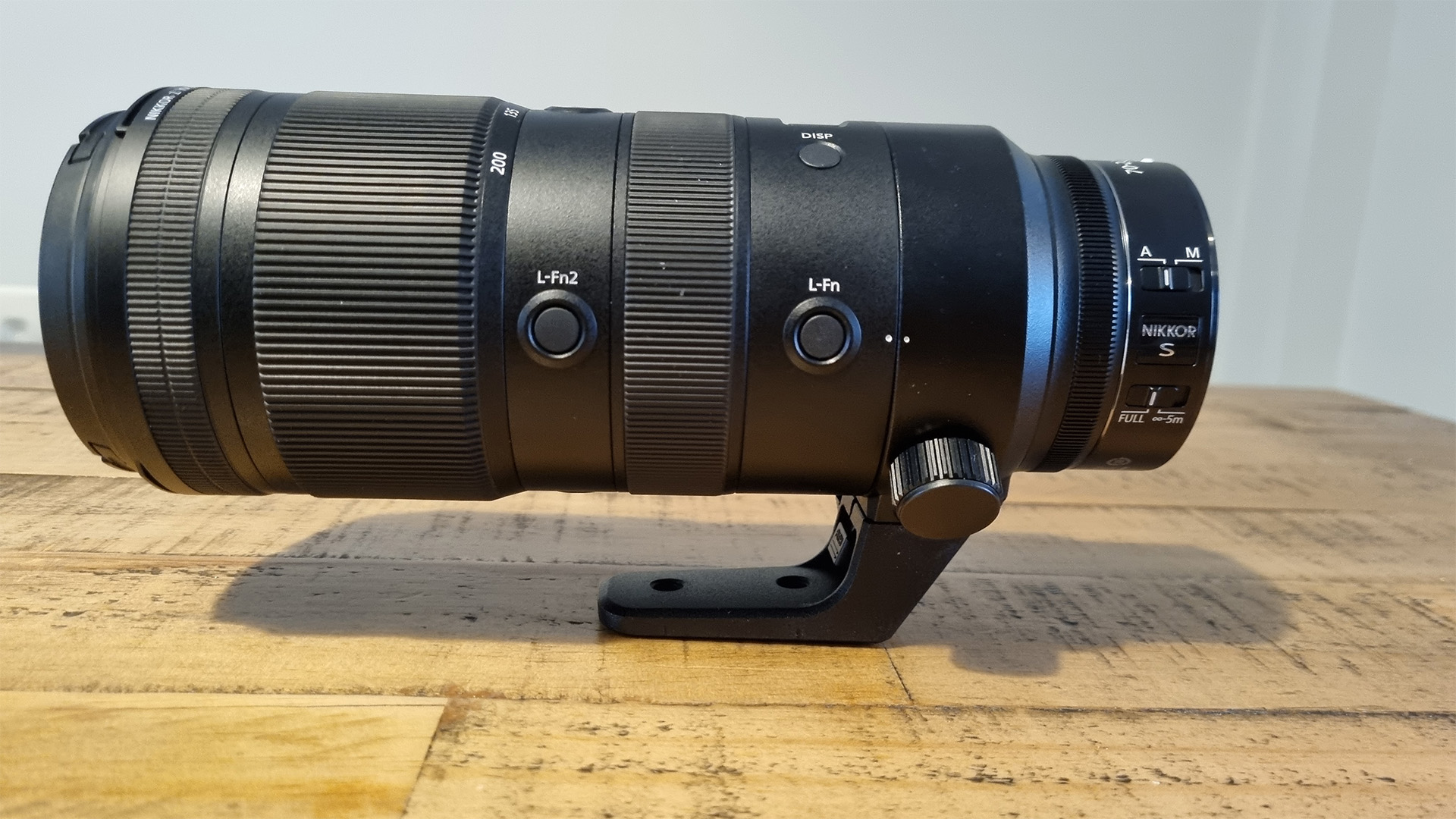
Specifications
Reasons to buy
Reasons to avoid
✅ You want the highest possible image quality: the quality of the images achieved with this lens is nothing short of phenomenal.
✅ You need a lens for all weather: astrophotographers are often shooting out in all types of weather, and this lens can certainly handle that.
✅ You want a lens with autofocus: a handy feature for astrophotography shots, the autofocus on this lens is fast and quiet.
❌ You're on a budget: all the features and the amazing image quality come with a hefty, hefty price tag.
❌ You want close-up shots of celestial objects: If you're interested in detailed shots of the moon, you might need to resort to a lens with a bigger zoom or a teleconverter.
🔎 The Nikon Nikkor Z 70-200mm f/2.8 S-Line is a flexible telephoto zoom lens that delivers sharp images of incredible quality. With autofocus and image stabilization, it predictably also comes with a very high price tag - but we think it's worth your hard-earned money if your budget stretches that far. ★★★★½
The Nikon Nikkor Z 70-200mm f/2.8 S-Line is easily one of the best zoom lenses on the market, offering incredibly sharp images right to the edges alongside fast autofocus and built-in image stabilization.
Design: This lens isn't small or light, weighing over 3 lbs and measuring 8.7 inches in length, but it has an elegant and functional design with a detachable foot for fixing it to a tripod. It's a tough and weatherproof piece of kit, with a fluorine-coated outer lens to prevent scratches, and it has plenty of on-body control options. There are three focus rings, the first for aperture, the second for focusing and the third for focal length, and it also features an OLED screen on top for displaying your current settings — a handy addition since you can assign up to 21 different functions to the lens itself.
Performance: In our Nikon Nikkor Z 70-200 f/2.8 S review we found the sharpness of the image quality on this lens staggering no matter how far we pushed the settings. The f/2.8 aperture allows you to capture super-sharp images of stars, but the lens is equally capable of capturing superb daytime landscape shots. The only limitation for some astrophotographers will be the focus range since 200mm isn't quite enough to capture detailed close-ups of the Moon, but this is the payoff for the low f-number and can be solved with the addition of a 1.4x teleconverter.
Functionality: The lens features fast and quiet autofocus as well built-in image stabilization, which Nikon calls Vibration Reduction. This is extremely helpful when shooting handheld and adds to the versatility of this impressive multi-functional lens.
- Read our full Nikon Nikkor Z 70-200 f/2.8 S review.
Attributes | Notes |
|---|---|
Design | 3.1 lbs weight won't overwhelm most star trackers. |
Performance | Fast & quiet autofocus. |
Functionality | Constant f/2.8 aperture great for astrophotography. |
The best Nikon F-mount telephoto
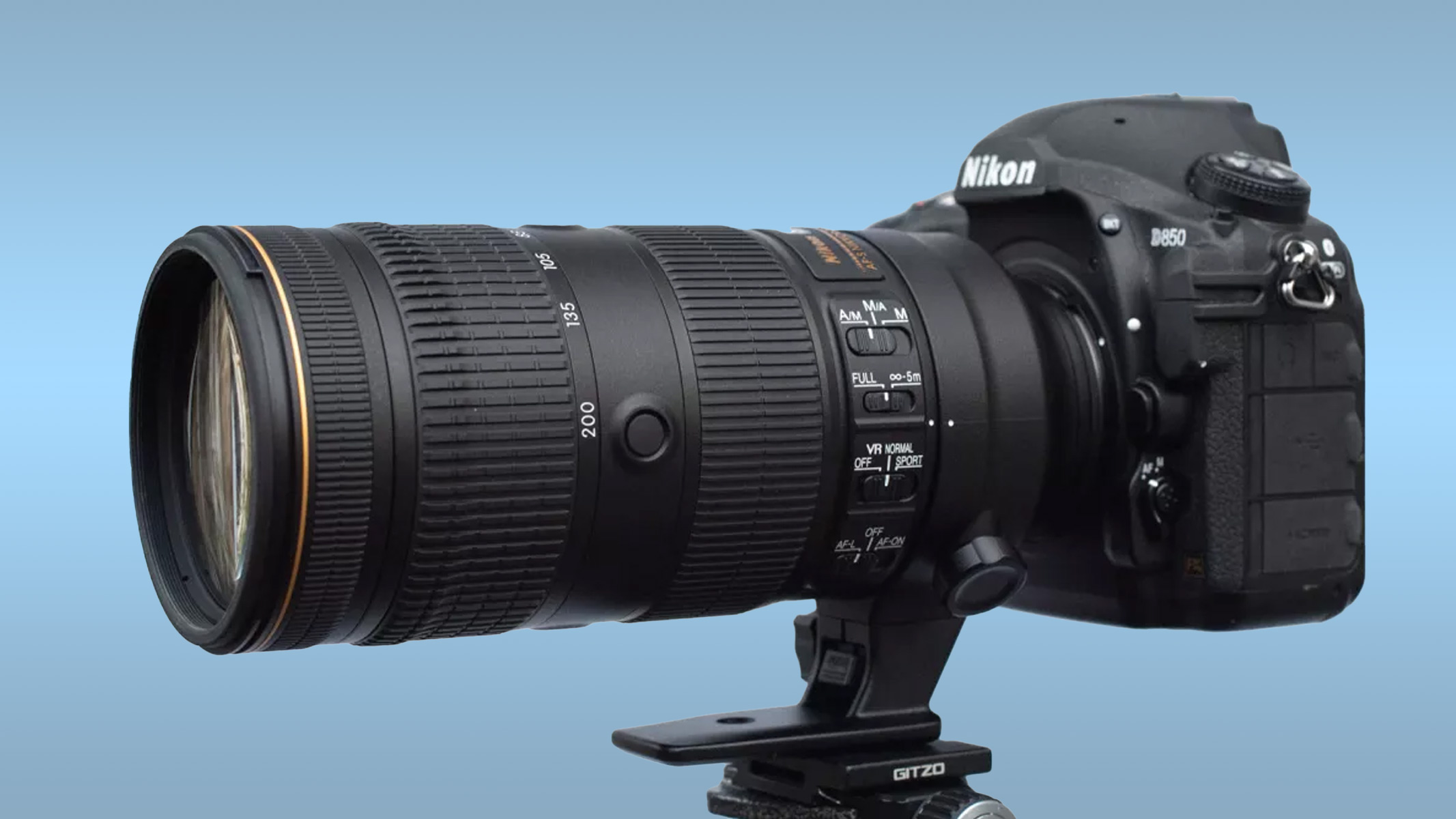
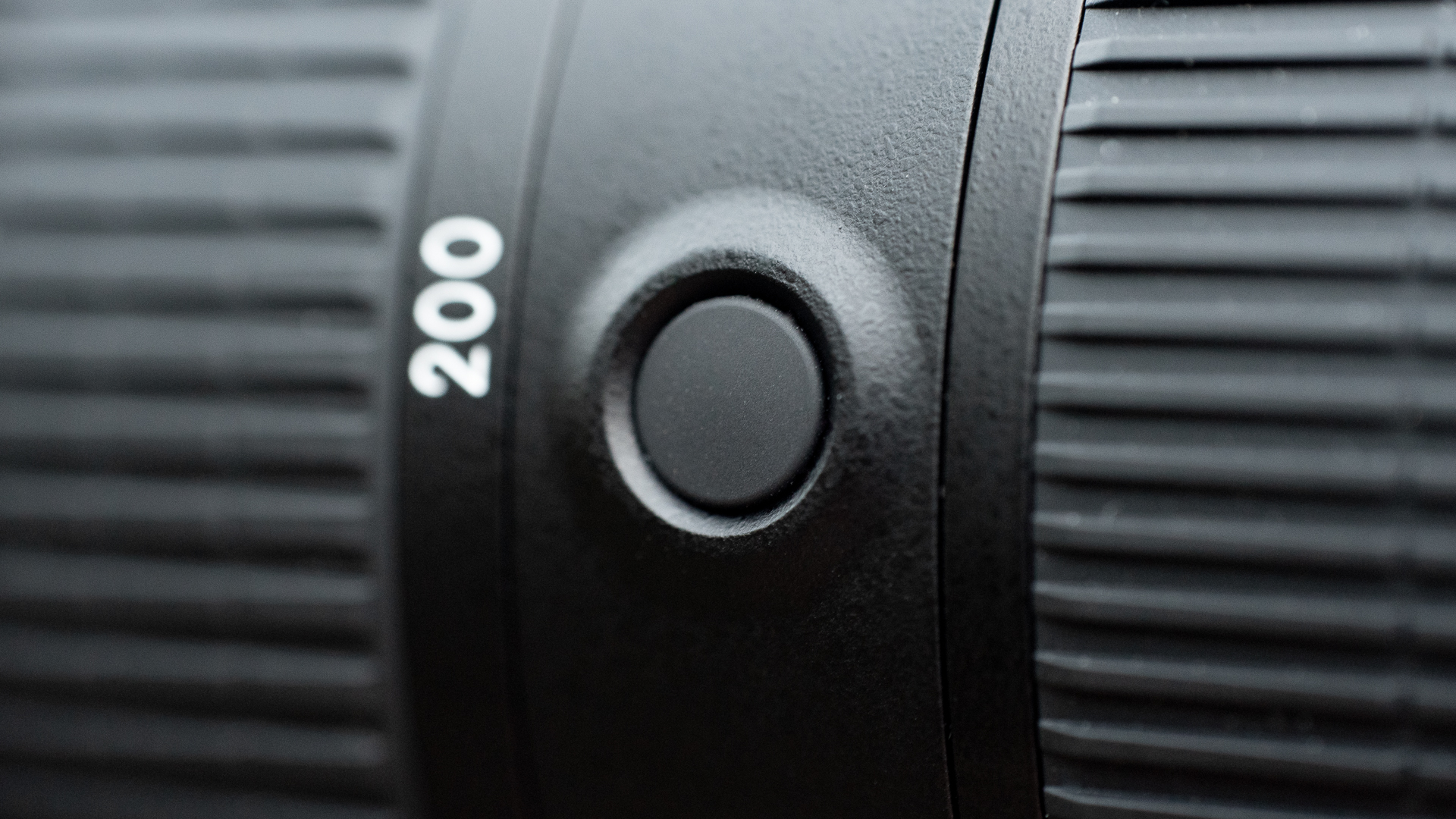


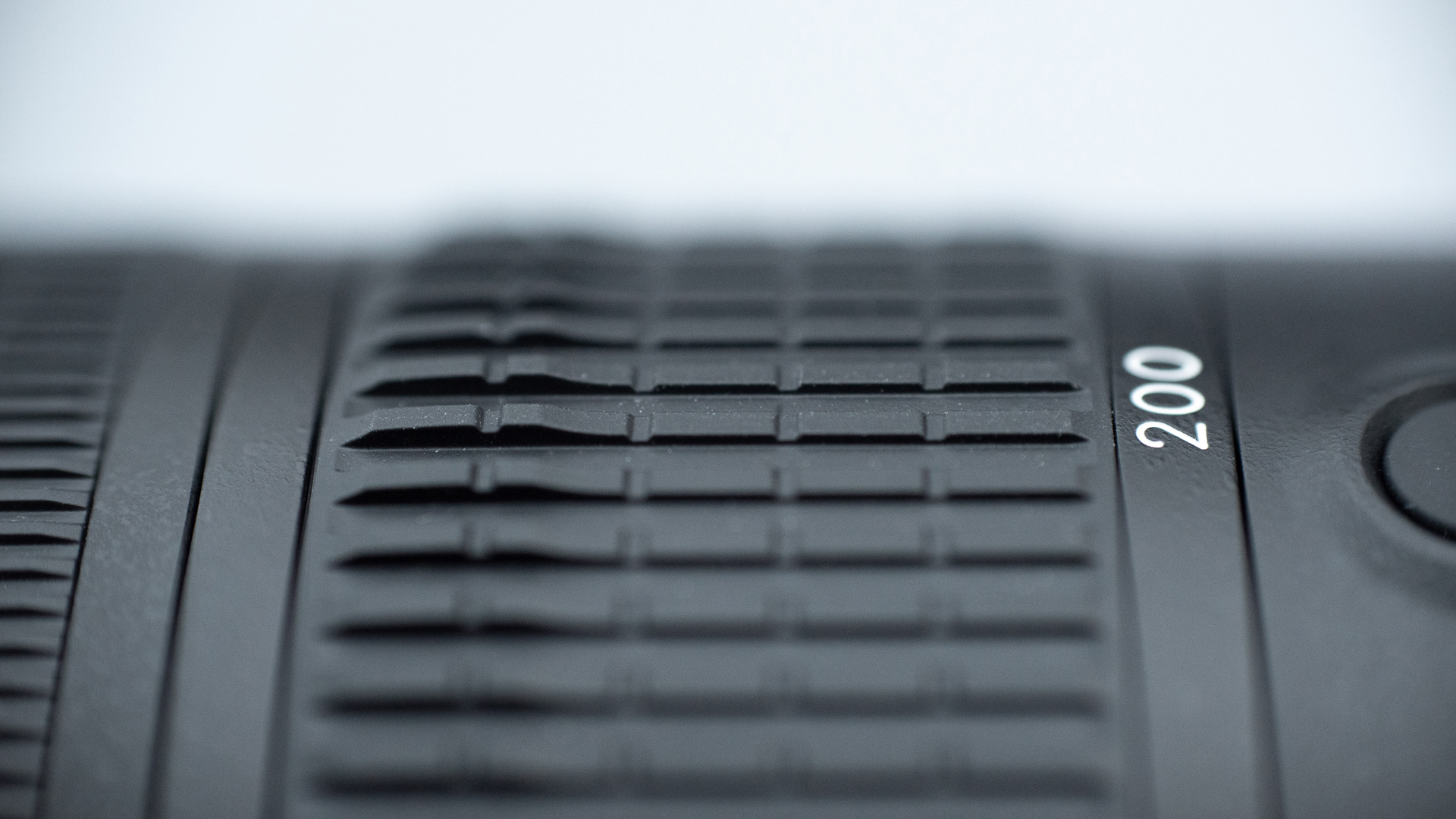
Specifications
Reasons to buy
Reasons to avoid
✅ You want to buy a second-hand lens: this lens has been a mainstay of professional photojournalists for years. Now over five years old, it's worth buying second-hand.
❌ You want to shoot deep sky images: Deep sky photography calls for more reach than this lens packs.
❌ You're after the latest tech: you can get better quality results using one of Nikon's mirrorless cameras.
🔎 The Nikkor AF-S FX 70-200mm f/2.8 FL-ED VR is a super lightweight and versatile telephoto zoom lens. It's a classic for a reason, with excellent light transmission and aperture. As one of the more lightweight options, it's also great to travel with and means you won't need a high-performance star tracker to use it. ★★★★½
Design: This lens is crafted from lightweight fluorite elements, and it comes with customizable buttons on the lens barrel that make it a breeze to track your subjects. The zoom and focus rings are super smooth and easy to use, and you can comfortably hold the lens with your left hand and operate these rings with just a finger or your thumb.
Performance: During our review of the Nikkor AF-S FX 70-200 f/2.8 FL-ED VR, we found the edge-to-edge sharpness of this lens incredible at any aperture. Shooting wide open at f/2.8 is what this lens is known for and makes light work of any low-light environment. Deep-field astrophotography is where the Nikkor AF-S FX 70-200mm f/2.8 FL-ED VR really excels, thanks to the wide constant aperture and intelligent Vibration Reduction that switches off automatically when it detects it’s on a tripod.
Functionality: Because of its Silent Wave Motor and internal focusing, this lens has lightning-fast and super quiet autofocus. It even gives you an extra half-stop of Vibration Reduction to help keep your view steady when shooting handheld, allowing for longer shutter speeds. Plus, its wide f/2.8 aperture stays the same throughout the zoom range, which is great for astrophotography because you don't have to fiddle with settings throughout your shoot.
- Read our full Nikon NIKKOR AF-S FX 70-200 f/2.8 FL-ED VR review.
Attributes | Notes |
|---|---|
Design | Customizable buttons make for easy subject tracking. |
Performance | Excels at deep-sky astro, but could do with more reach. |
Functionality | Lightning fast and super quiet autofocus. |
The best Nikon ultra-telephoto
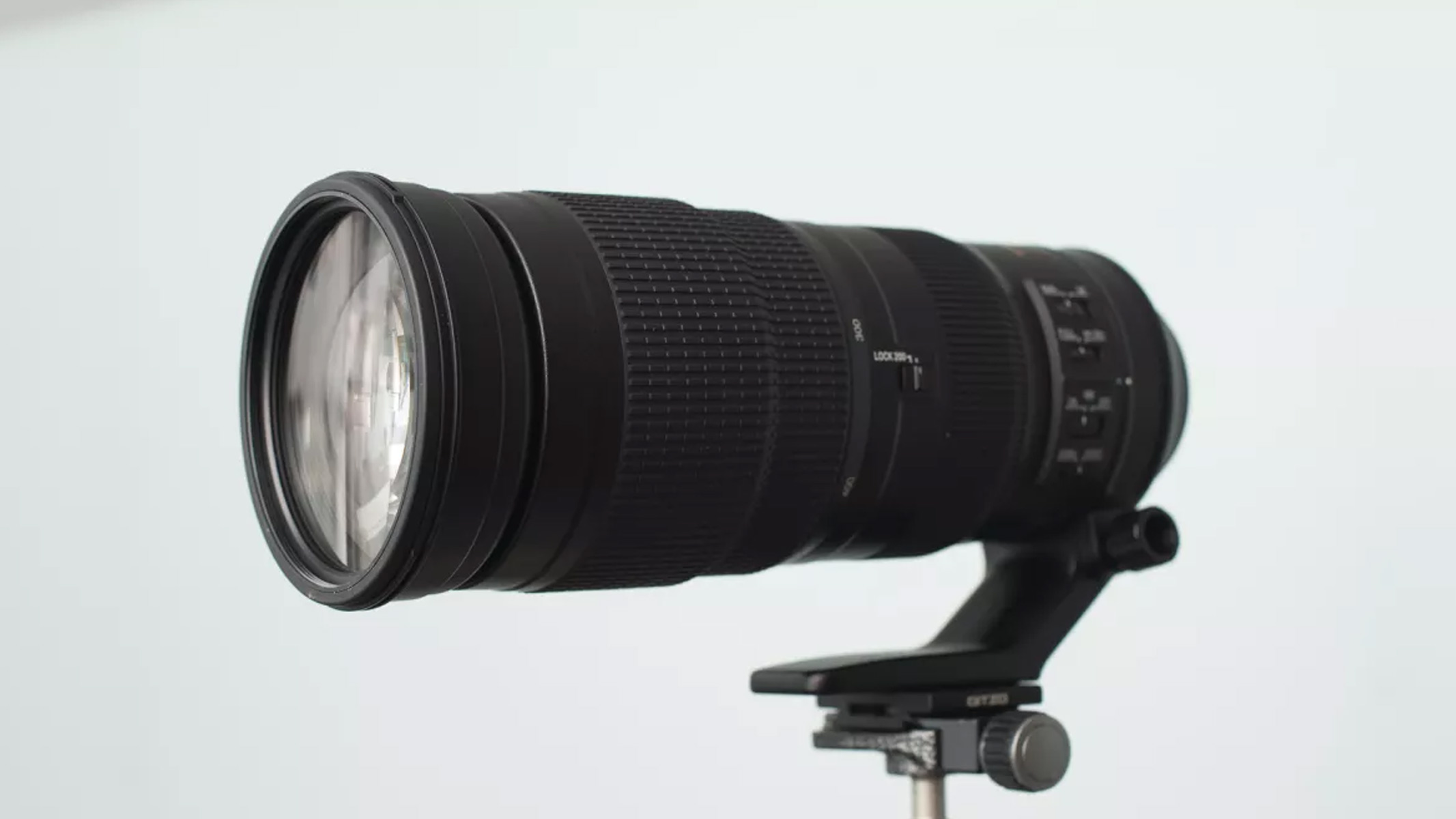
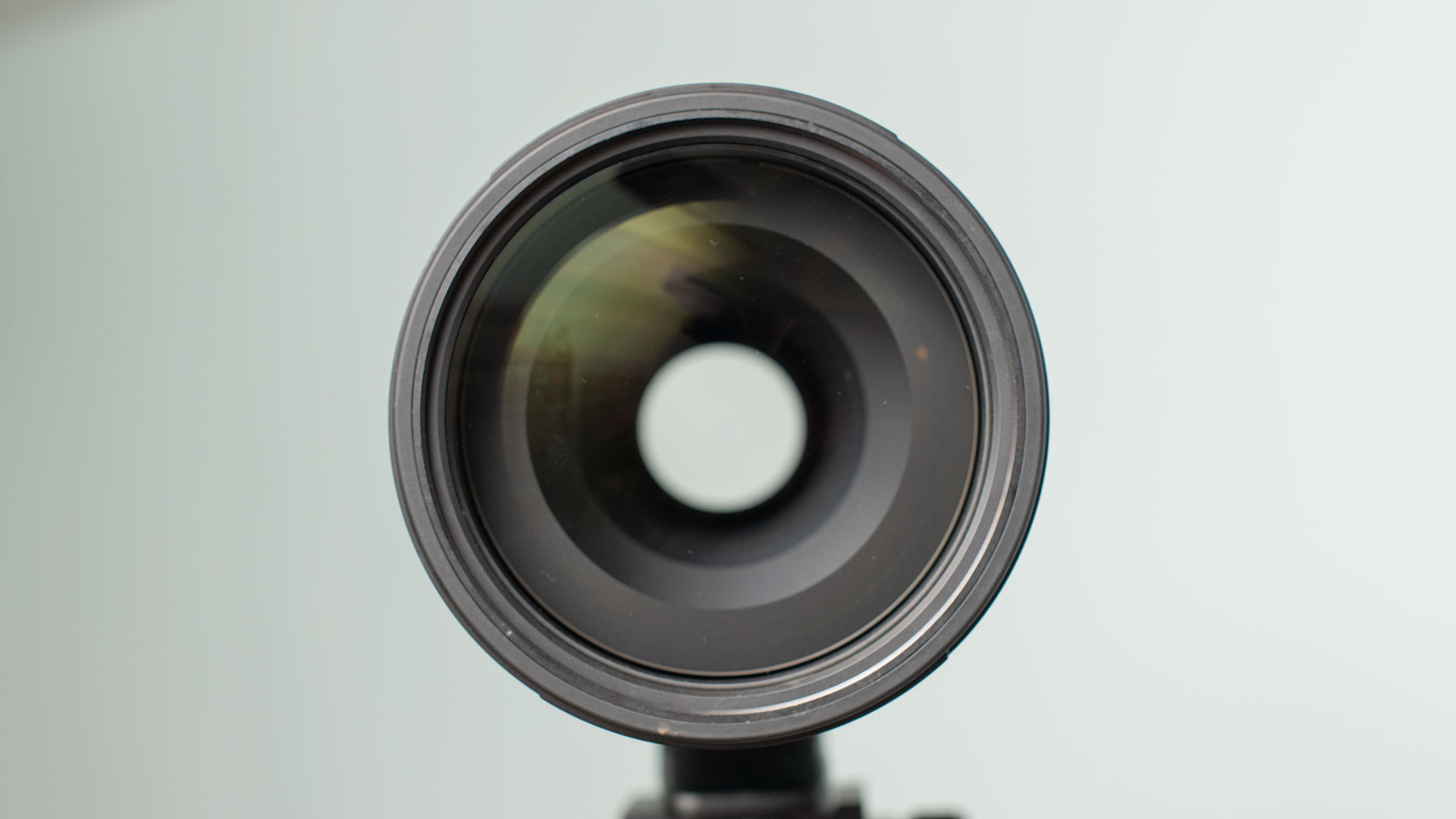
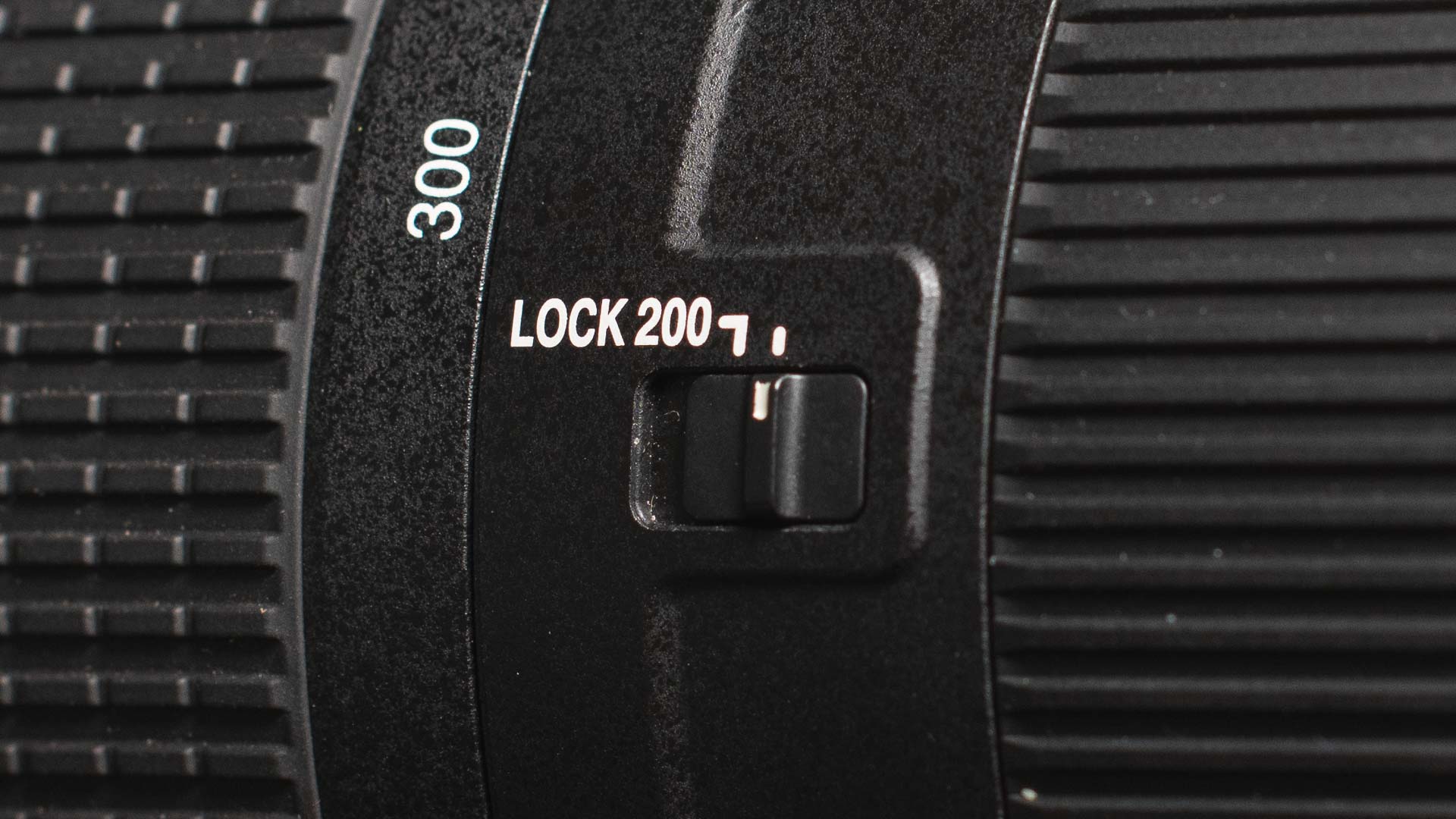
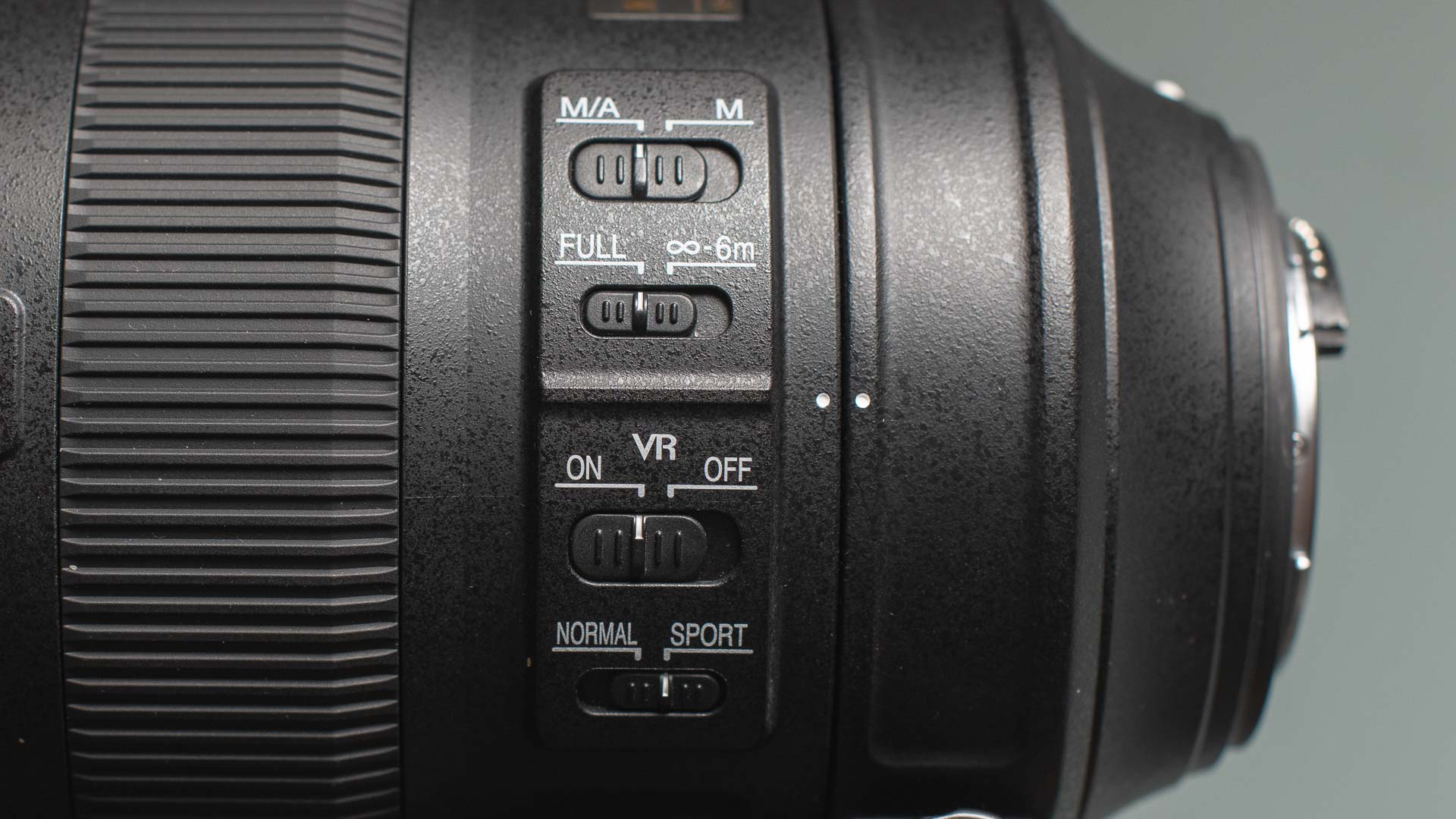
Specifications
Reasons to buy
Reasons to avoid
✅ You're a deep-sky photographer: this lens' combination of focal length and maximum aperture yields incredible results.
❌ You're on the go a lot: at 5.1 lbs, this is one of the heaviest zoom lenses in this guide.
❌ You're a beginner: this bulky lens is probably not the best for a beginner when there are cheaper and lighter 70-300mm lenses out there.
🔎 The Nikon AF-S FX NIKKOR 200-500mm f/5.6E ED VR is a great choice for photographers interested in sports, wildlife or deep-sky photography. It performs well in low-light environments as well as daytime shoots. ★★★★½
Design: This lens is one of the heaviest in this guide, tipping the scales at 5.1 lbs. This might be a challenge for less sturdy tripods or star trackers, but if you're using such a powerful lens, it's likely you'll need a professional-grade tracker that can handle the weight.
Performance: Wildlife photographers will love this lens, and it performs well for astrophotography too. During our Nikon AF-S FX NIKKOR 200-500mm f/5.6E ED VR review, we found there was minimal chromatic aberration on extremely contrasted edges, even at 200% crop. Although the lens suffers a little from some vignetting around the edge, this can easily be removed in image editing software.
Functionality: This lens can reach an impressive 500mm focal length and also comes with a constant f/5.6 aperture. This means that, unlike other superzoom lenses, the aperture doesn't close down to reduce the light reaching the sensor as you zoom in. It also has four switches on its side to restrict autofocus distance, with options of FULL (which will autofocus the entire range from its minimum focusing distance to infinity) or infinity — 6 meters to cut AF hunt time.
- Read our full Nikon AF-S FX NIKKOR 200-500mm f/5.6E ED VR review.
Attributes | Notes |
|---|---|
Design | One of the heaviest lenses. |
Performance | Slight vignetting, but can easily be fixed in post processing. |
Functionality | Constant f/5.6 aperture even at 500mm. |
The best Canon wide-zoom



Specifications
Reasons to buy
Reasons to avoid
✅You're a professional photographer: this premium lens is worth the money for the incredible quality shots you get, in our opinion.
❌ You're on a budget: at upwards of $3,000, this lens is not cheap. But for what it's worth, we think it's worth every cent.
❌ You're an astrophotographer or wildlife shooter: this lens may not be the one for you due to its focal length range being too long for astro and too wide for wildlife.
🔎 The Canon RF 28-70mm f/2L USM lens is one of the best zoom lenses ever made, in our opinion. Sure, it's big and expensive, but the image quality you get in return is unparalleled. ★★★★½
Design: This lens has an incredible amount of glass and an impressive 95mm filter thread, allowing it to let in an insane amount of light. It's fully weather-sealed and only missed out on the five-star rating from us due to its size, weight and price.
Performance: When we reviewed the Canon RF 28-70mm f/2L USM lens we were staggered by the quality of image created by this lens. It performs extremely well when shot wide open at f2 in low light conditions, despite not being the best focal length for astrophotography. We were pleasantly surprised by how well it tracks moving objects, and it also has excellent eye tracking (we thought it rivaled Sony's). Even more impressive is the fact that it gave no lens flare when shooting directly into the sun, which is almost unheard of.
Functionality: This lens offers a customizable control ring, an AF/MF switch, a lock button and a smoothly-operating, quiet zoom ring. Although it lacks image stabilization, the lens is so large and bright that we didn't really miss having IS — although, considering the incredibly high price, we were surprised that it didn't have it.
- Read our full Canon RF 28-70mm f/2L USM review.
Attributes | Notes |
|---|---|
Design | Very fat and heavy. |
Performance | Performs incredibly well in low light. |
Functionality | Lacks image stabilization, but doesn't suffer for it. |
The best Canon telephoto

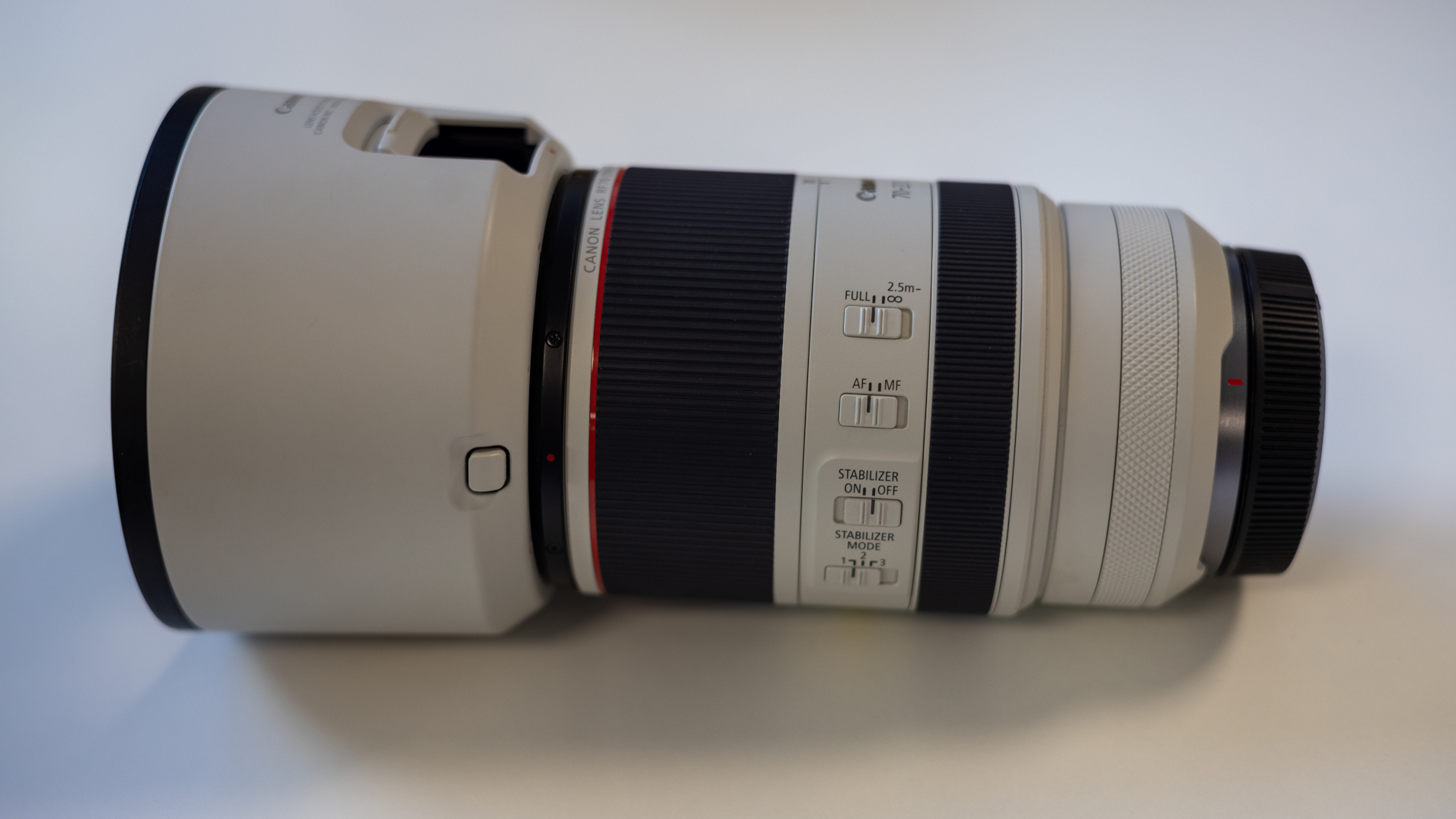


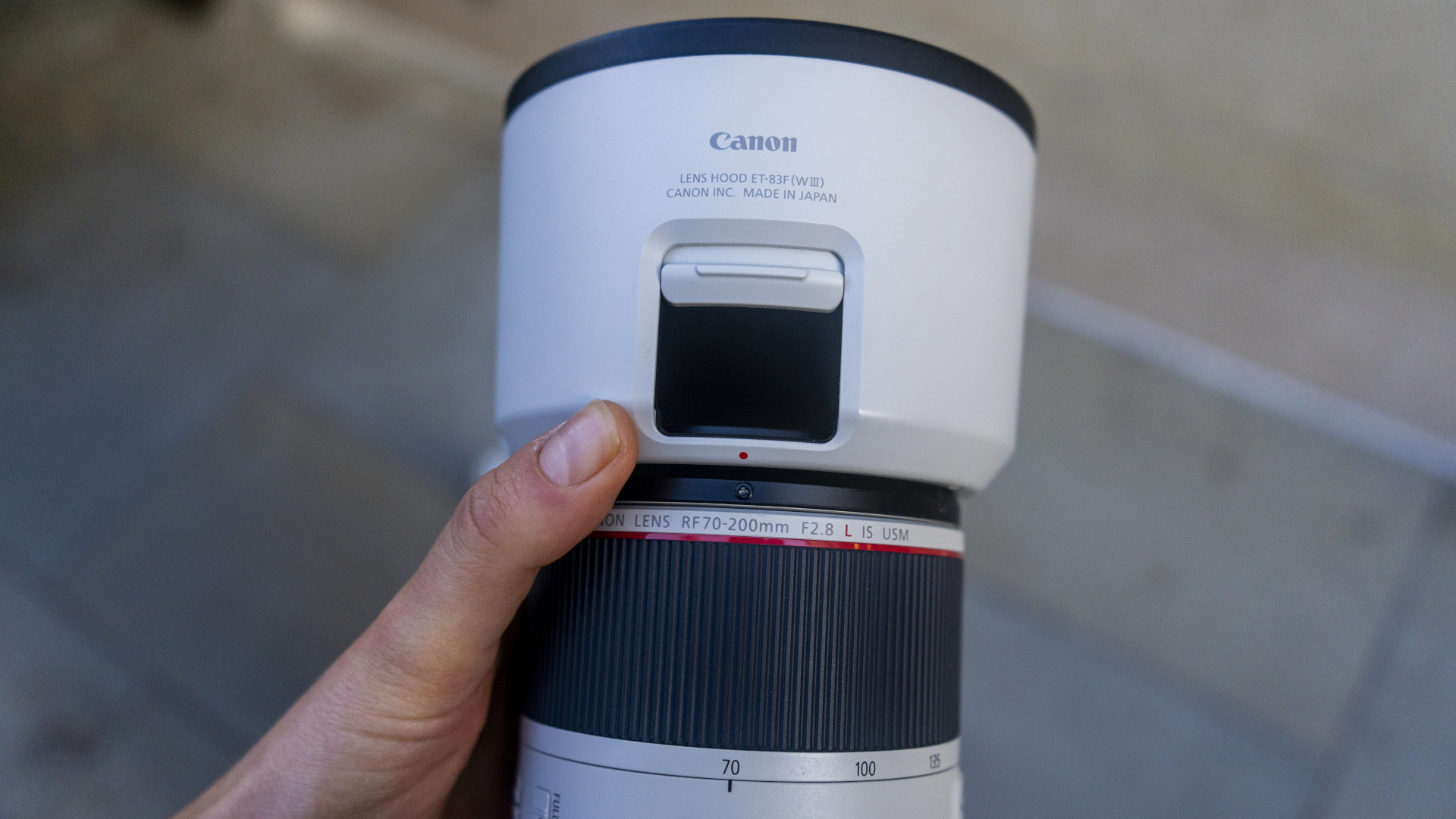
Specifications
Reasons to buy
Reasons to avoid
✅ You want a light telephoto lens: at just 2.4 lbs, this lens is surprisingly light for the performance it packs.
✅ You want a customizable lens: the control ring can be customized to adjust any number of camera settings.
❌ You're a deep-sky photographer: deep-sky photographers may want to opt for something with a greater focal range.
❌ You only shoot astro: as this lens isn't compatible with teleconverters, you might want to think twice if you're looking for purely an astro lens.
🔎 The Canon RF 70-200mm f2.8L IS USM is undoubtedly one of the most compact telephoto zooms of its kind. It's expensive, but the lightweight, high-quality build means you can get loads out of it even in low-light settings. ★★★★½
Design: The Canon RF 70-200mm f2.8L IS USM is one of the lightest and most compact telephoto zoom lenses on the market owing to the design of its zoom mechanism. Instead of taking place inside the barrel of the lens, it telescopes in and out externally, allowing the lens to collapse into its compact form and shifting the center of gravity back closer to your eye, which makes it very well balanced when shooting handheld. The only downside of this design is that it doesn't leave any room at the back for a teleconverter, which will be a major limitation for some given that the maximum focal length is capped at 200mm.
Performance: This lens offers beautiful image quality which peaks at f/4, although results are still pleasing when shooting at f/2.8. It provides stunning contrast all the way to the edges, with only some minor vignetting when shooting wide open which can be easily corrected in post-production. In our Canon RF 70-200mm f/2.8L IS USM review we also really enjoyed the bokeh offered by this lens.
Functionality: A particular highlight of this lens is its powerful autofocus which operates almost silently thanks to the twin Nano USM motors — perfect for capturing noise-sensitive wildlife. You also get up to eight stops of image stabilization, and the included lens hood has a useful window which can be opened to adjust the position of any filters without having to remove the entire hood. To top it off, the rear control ring can be customized to let you change exposure settings from the lens itself, with options for the ISO, aperture and shutter.
- Read our full Canon RF 70-200mm f/2.8L IS USM review.
Attributes | Notes |
|---|---|
Design | Surprisingly lightweight. |
Performance | Top-notch in every aspect. |
Functionality | Fast maximum aperture. |
The best all-rounder from Sony

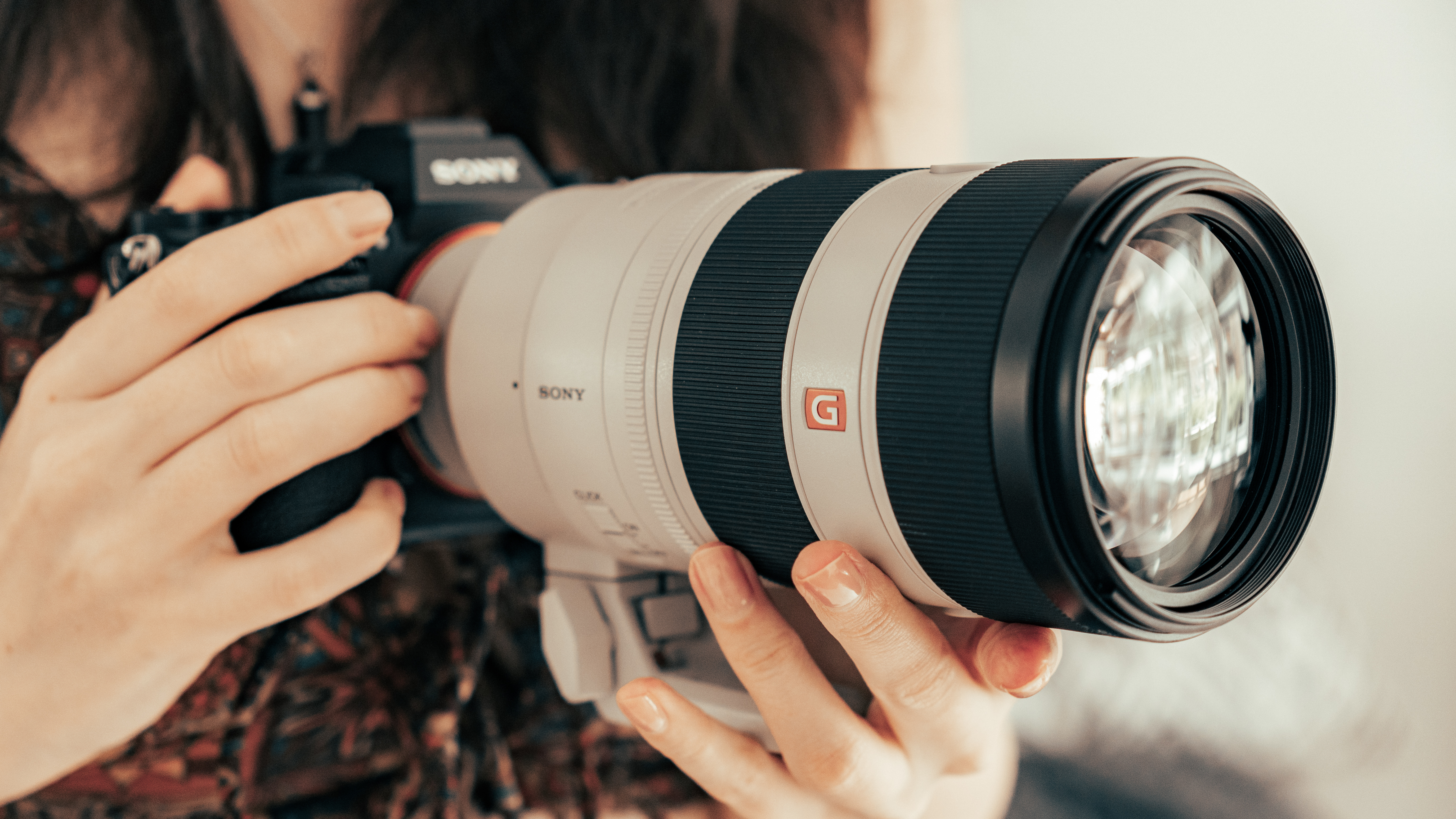

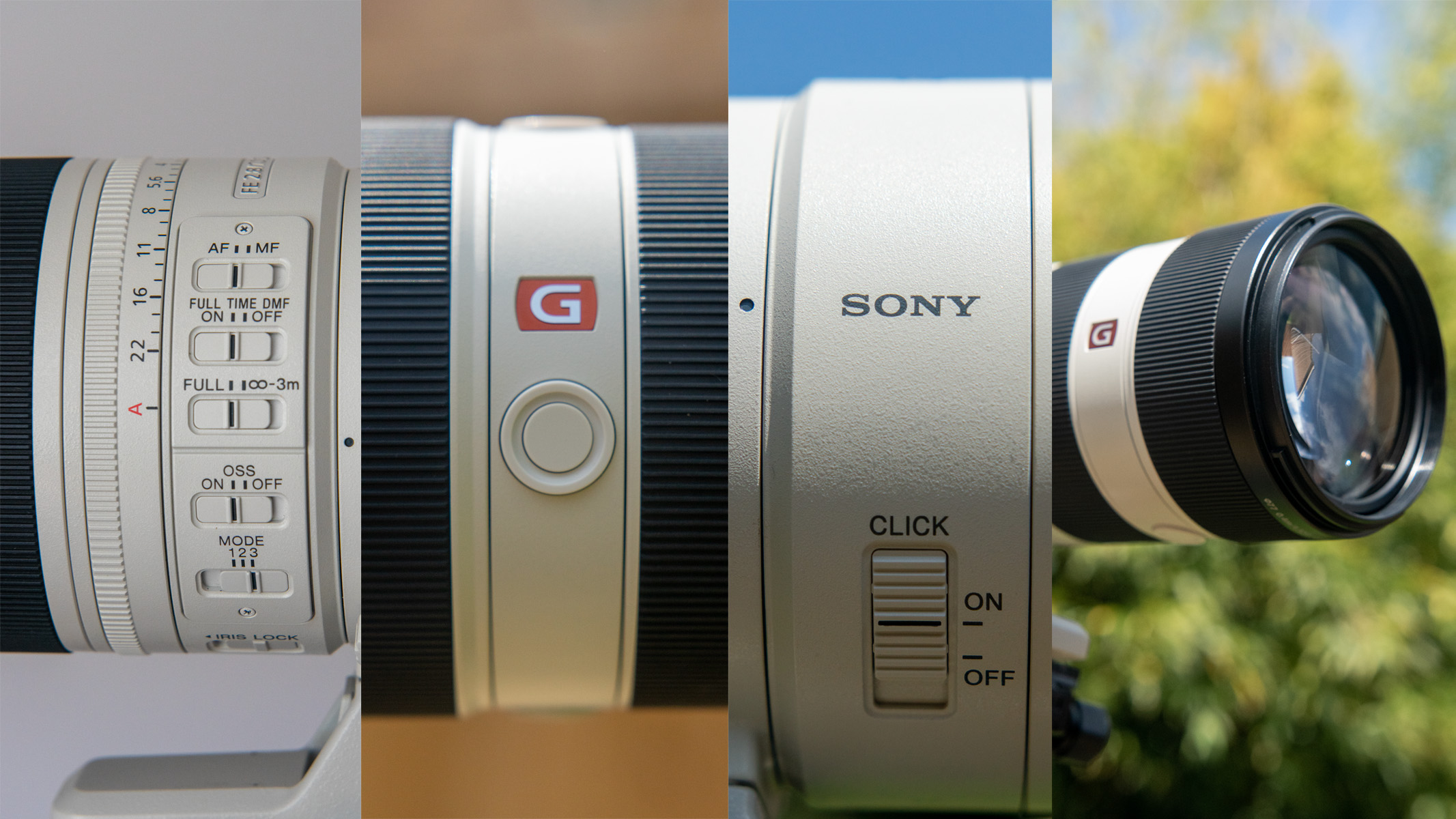
Specifications
Reasons to buy
Reasons to avoid
✅ You want an all-rounder lens: this lens is impressive across many disciplines and particularly excels at wildlife and landscape photography.
✅ You want to create sharp images: with this lens, you can crop a decent amount in post-processing without creating any blur.
❌ You're on a budget: this lens is on the expensive side compared to some of its competitors.
❌ You only shoot astro: with this focal range, you might want to opt for something else if your main focus is astrophotography.
🔎 The Sony FE 70-200mm f/2.8 G Master OSS lens is a great mid-range telephoto zoom, capable of pretty much any style of photography and makes a perfect all-rounder lens. However, if you primarily shoot astro or wildlife photography, you may want to think twice about purchasing this lens unless you have a star tracker. ★★★★½
Design: Although big zoom lenses can seem a tad heavy, the heft comes with the territory for a zoom lens of this quality, but luckily this new version of this lens is around 29% lighter than its predecessor. When we reviewed the Sony FE 70-200mm f/2.8 GM OSS II, we found it much easier to shoot with this model throughout the day without significant armache.
Performance: Although this lens has a maximum zoom of only 200mm, the images it produces are incredibly sharp and high-quality at this focal length. We were able to crop our photos drastically in post-processing without losing any sharpness. The autofocus works exceptionally well, and the lens creates beautiful bokeh even when using narrower apertures, making it great for artistic shots and portraits. It may not be the first choice for astrophotography with this focal range unless paired with a star tracker with a suitable payload but we found that it still produced very respectable photos of the night sky.
Functionality: This new iteration from Sony adds some attractive upgrades to what was already a very impressive zoom lens. The 70-200mm focal length makes it a great all-rounder, producing sharp and vibrant images. This newer version also has more switches on the lens itself for more intuitive shooting, which we liked. There's AF/MF, a new Full Time DMF switch, which is great if you want to override the autofocus if it becomes stuck on a certain point, a focus limiter with either Full or 3M-∞, then an OSS on/off switch and a mode dial for three different OSS modes.
- Read our full Sony FE 70-200mm f/2.8 GM OSS II review.
Attributes | Notes |
|---|---|
Design | Still big and heavy, but considerably lighter than the first version. |
Performance | Tack-sharp images, even after significant cropping. |
Functionality | Some attractive upgrades from the previous version. |
The best Sony APS-C wide zoom
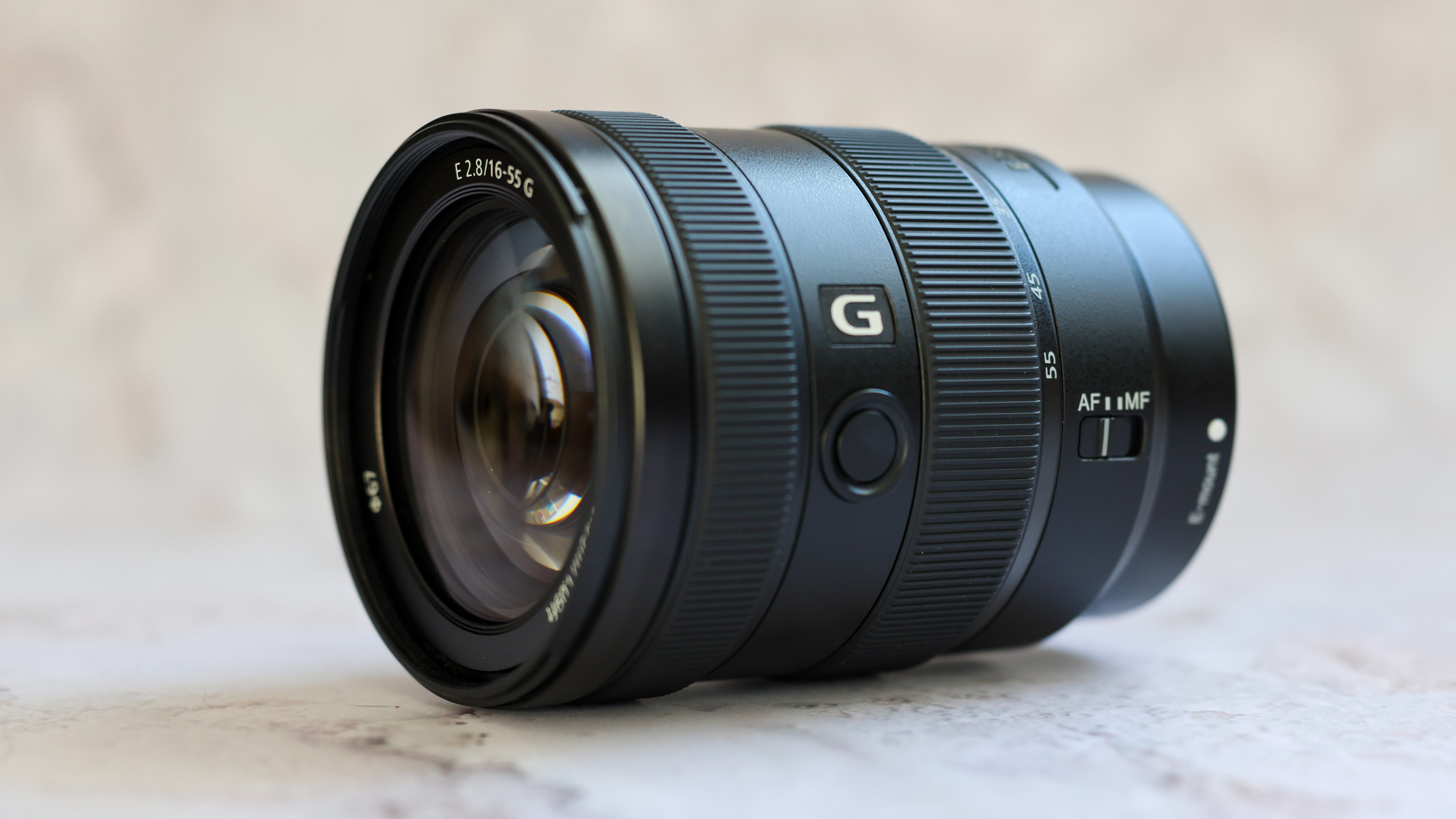
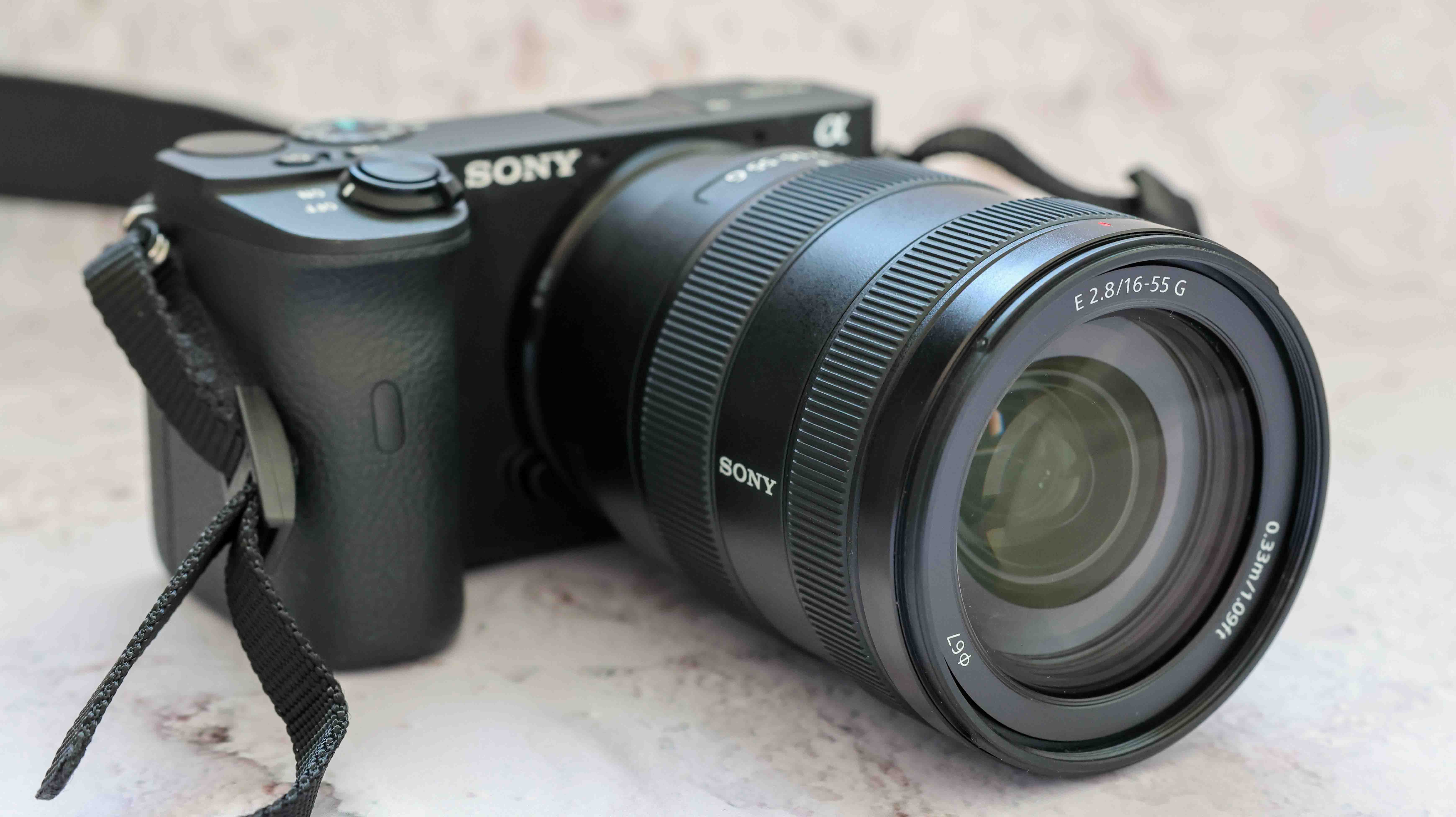
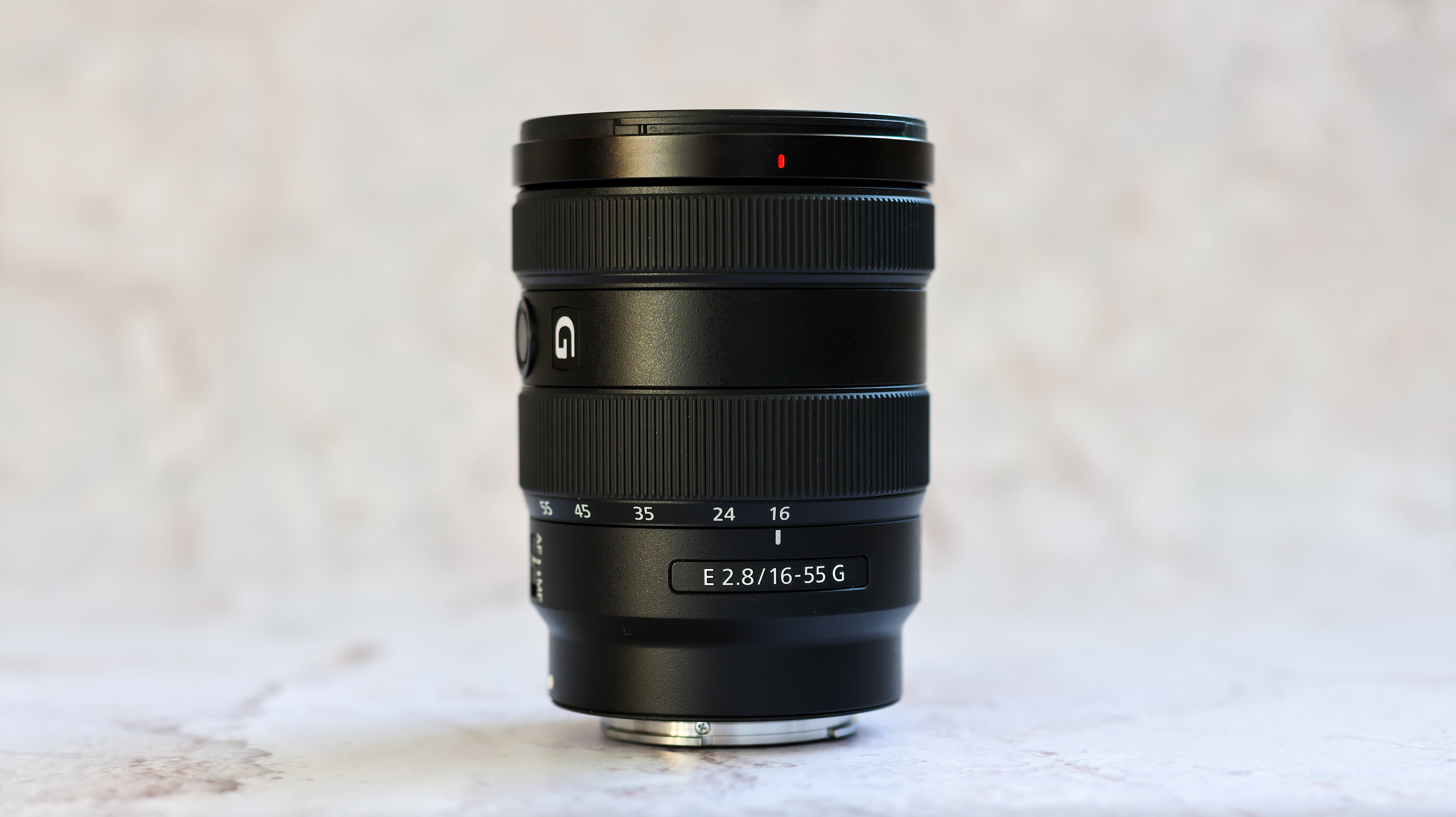
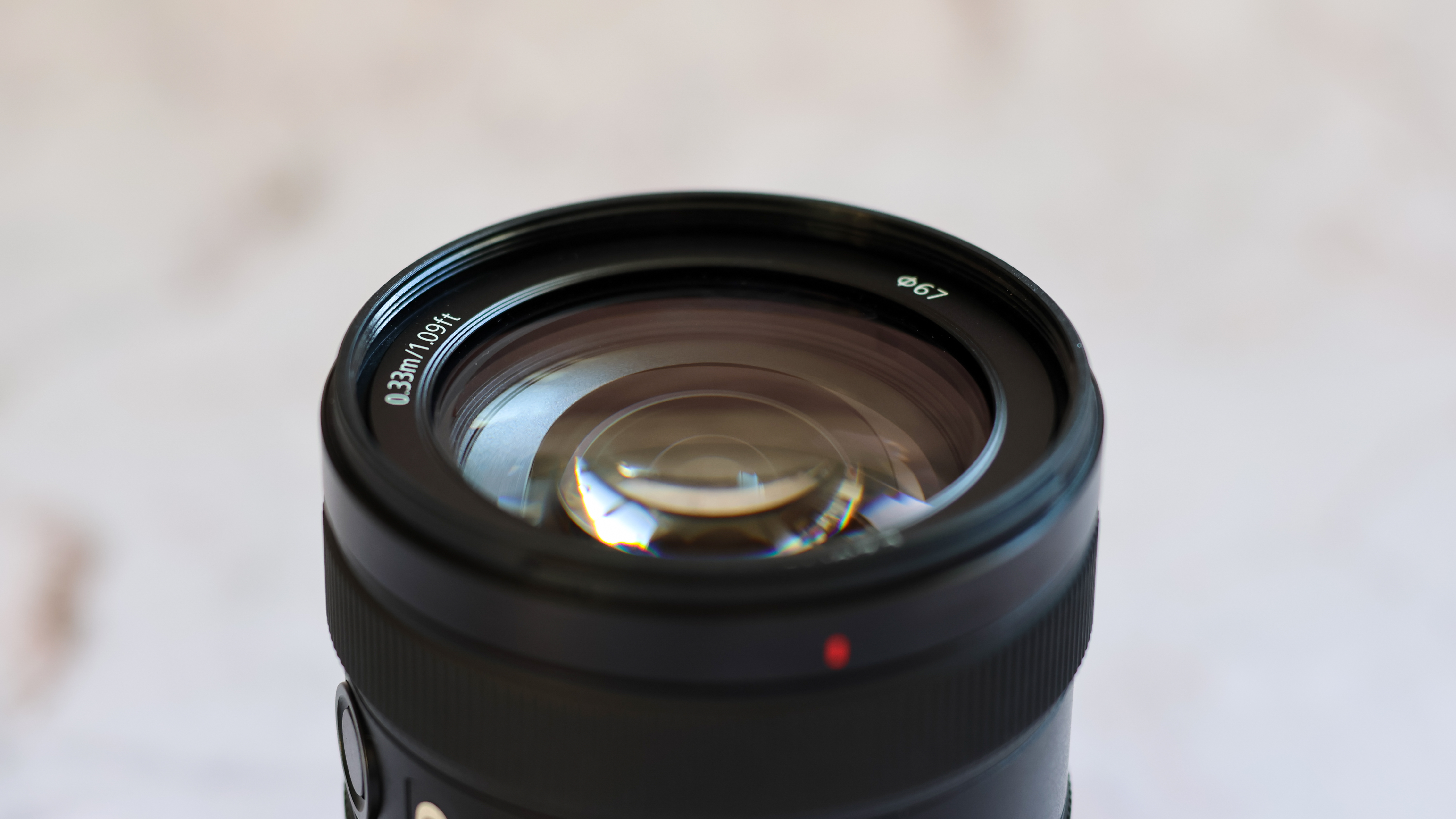
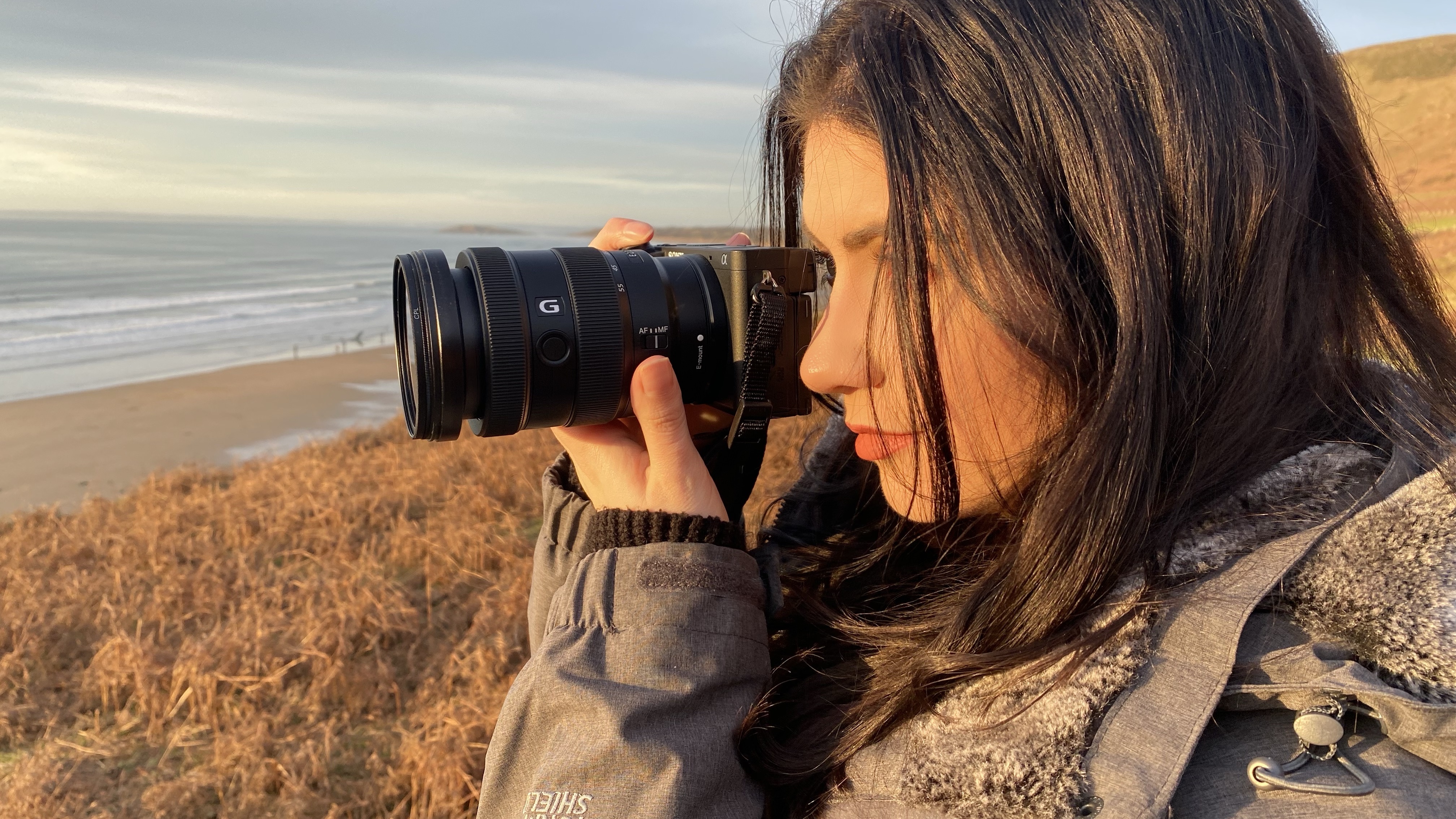
Specifications
Reasons to buy
Reasons to avoid
✅You want a super lightweight lens: at just 1.1 lbs, this is the lightest lens in this guide.
✅ You want a versatile lens: while it doesn't have the longest focal length, this camera can handle most things you throw at it.
✅ You have an APS-C camera: this lens isn't compatible with full-frame cameras.
❌ You want a long focal length: the fullest zoom on this lens is 55mm.
❌You're on a budget: this lens is incredibly expensive compared to many of its competitors with longer focal lengths.
❌ You want a lens with image stabilization: especially considering there are only two APS-C Sony cameras that have in-body image stabilization.
🔎 The Sony E 16-55mm f/2.8 G lens is incredibly expensive for what it is, but it is a versatile lens that can handle most things you throw at it, from architecture to astro, and a logical choice if you have an APS-C Sony camera. ★★★★
Design: You may have noticed that all the lenses on this list so far are full-frame compatible lenses, but we thought this APS-C lens from Sony was absolutely worth including. Whilst there isn't a lot of competition at this level and this lens won't win any prizes for focal length, we'd still class it as one of the best zoom lenses for APS-C Sony cameras (which are rapidly improving). The lens itself is versatile and the build is compact and lightweight, making it very travel-friendly and easy to keep on your camera for most shooting situations.
Performance: Despite not offering longer focal lengths, during our review of the Sony E 16-55mm f/2.8 G lens we found this lens to be an absolute workhorse that can handle almost anything you throw at it. This lens produces incredibly sharp images, and its constant aperture of f/2.8 ensures good light intake even at its longest zoom of 55mm. Plus, its wide-angle capability of zooming out to 16mm makes it excellent for astrophotography. We think this lens will appeal to photographers of all disciplines as an excellent all-rounder.
Functionality: One of the drawbacks of this lens, particularly for the hefty price tag, is the lack of image stabilization — and it's only the very recent APS-C camera models that have in-body image stabilization to rely on. That said, for many types of photography you can absolutely make do with just using a tripod or ensuring that you're images are shot at a fast enough shutter speed — and if you're going to be using the 16mm for astrophotography, your camera will be on a tripod anyway.
- Read our full Sony E 16-55mm f/2.8 G review.
Attributes | Notes |
|---|---|
Design | Compact and lightweight. |
Performance | Produces sharp images. |
Functionality | No image stabilization is disappointing. |
The best third-party zoom
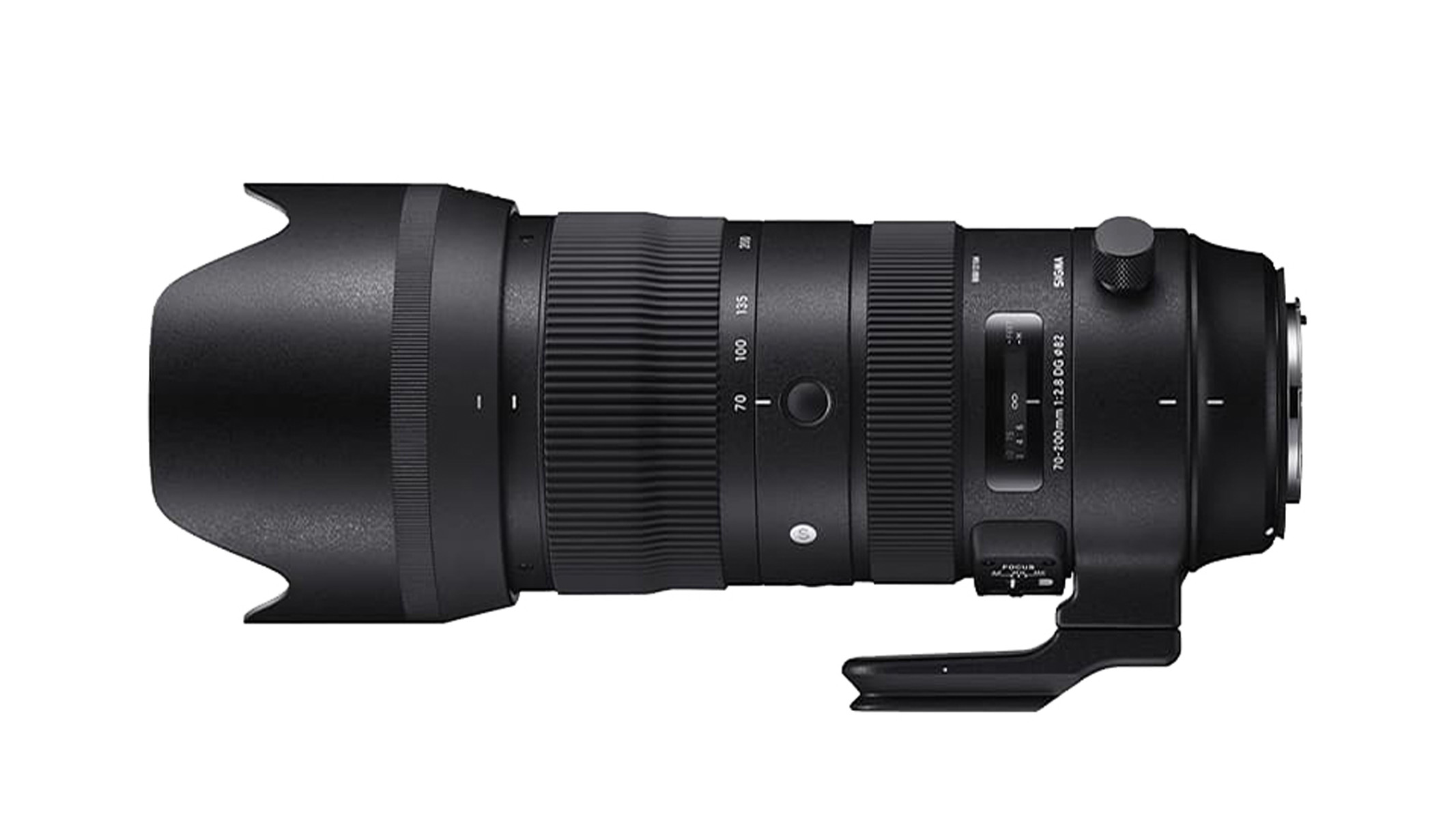
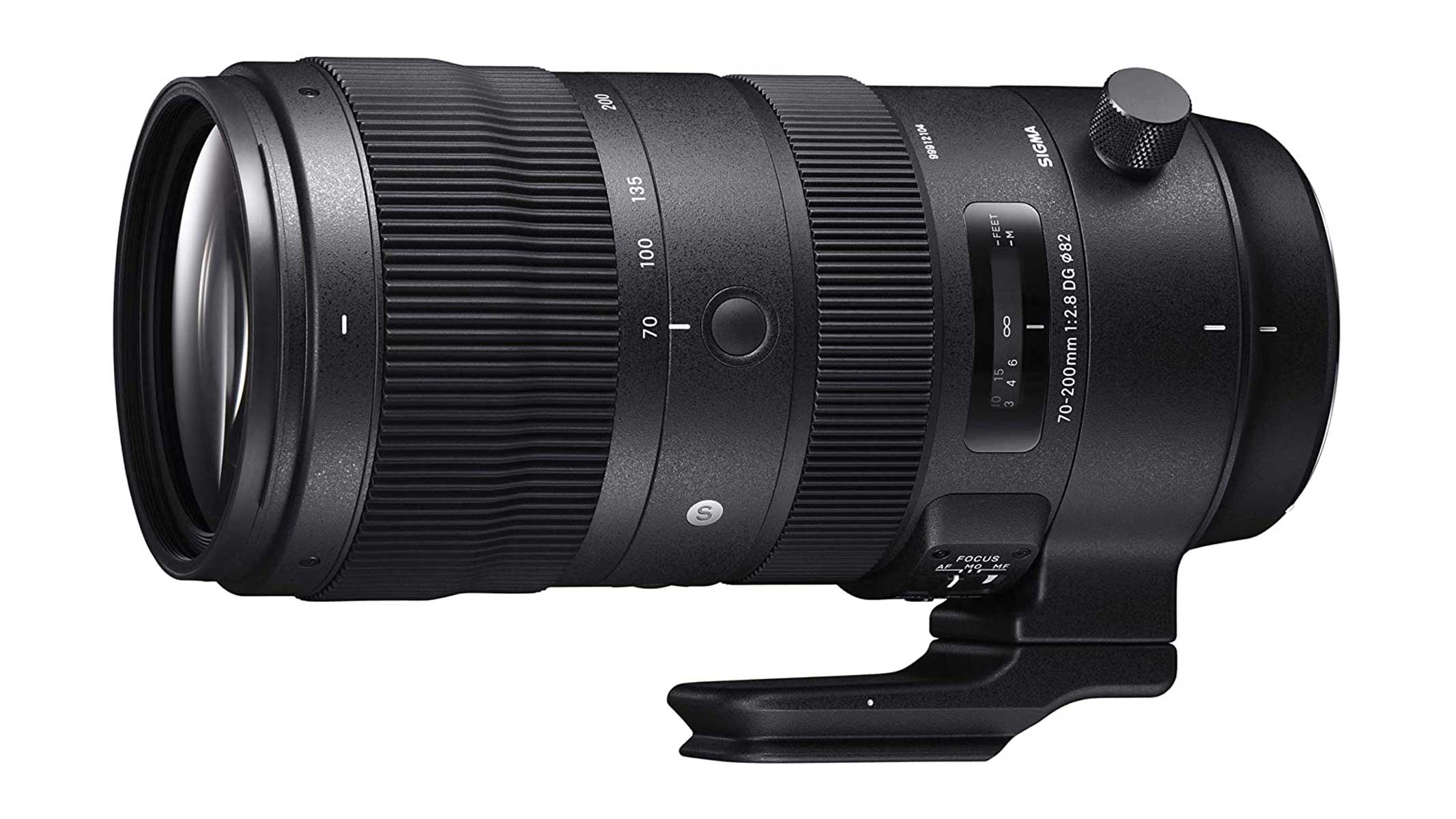
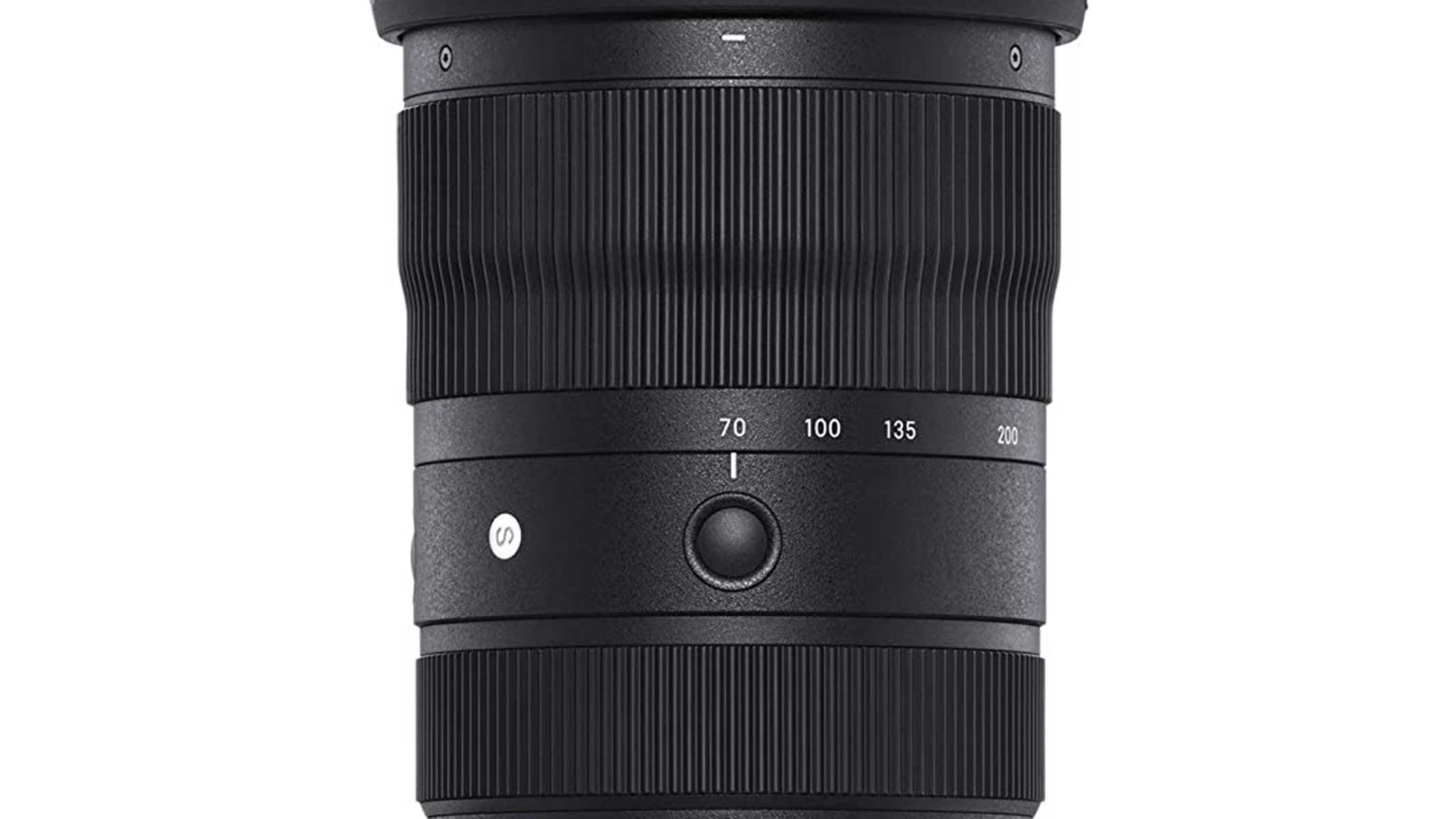
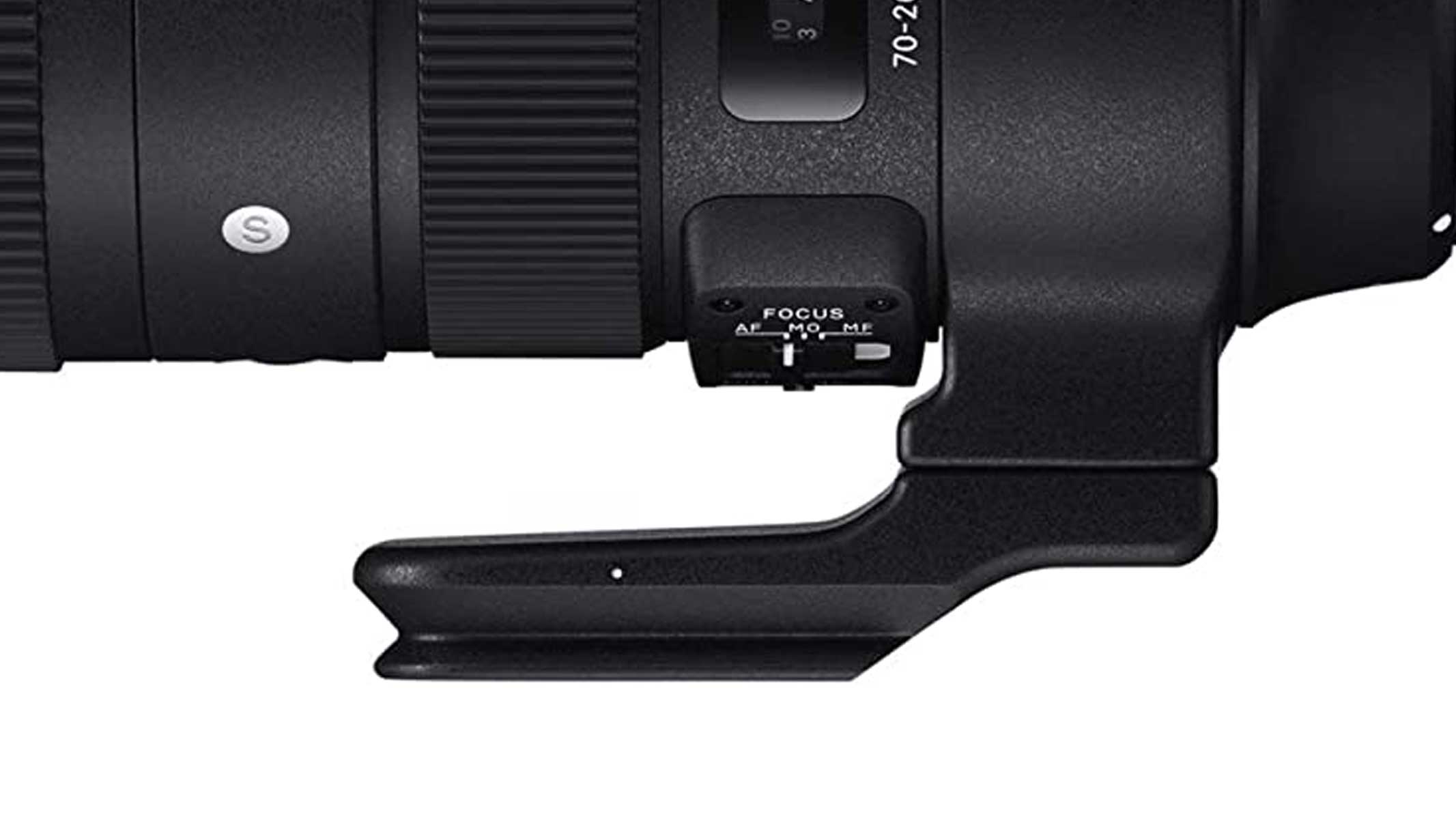
Specifications
Reasons to buy
Reasons to avoid
✅ You're on a budget: excellent specs and features for a fraction of the price of other brands.
✅ You shoot astro: with its fast, constant aperture and sharp optics, you can comfortably go skywatching with this lens.
❌ You want a lightweight lens: while it's not the heaviest lens in this guide, you can find lighter than 4 lbs.
❌ You're a beginner astrophotographer: you'll need a high-quality star tracker and tripod for this lens.
🔎 The Sigma 70-200mm f/2.8 DG OS HSM is a great lens for anything from wildlife to sports and even astro. It comes at a fraction of the price of other big brands without compromising on image quality. ★★★★
With Nikon and Canon lenses of this type generally costing in excess of $2000, the Sigma 70-200mm f/2.8 DG OS HSM is an appealing alternative at just a smidge over $1000. In our Sigma 70-200mm f/2.8 DG OS HSM review we were impressed with this bright and well-made lens, although sadly it doesn't come in an E-mount version for Sony users.
Design: At 4 lbs, this isn't a light lens, but it has a pleasantly sturdy feel with most of the barrel being made of metal. It's also thoroughly weather-sealed to keep it safe when shooting outdoors, featuring grommets where the lens meets the camera body and at the zoom and focus rings.
Performance: This lens produces very sharp images even when shooting at f/2.8, with the most impressive results to be found at around f/5.6. It keeps both comatic aberration on stars and daytime chromatic aberration very well controlled, and the autofocus is fast and silent to use.
Functionality: There are three AF Function buttons on the top, left and bottom of the lens, alongside an autofocus switch and a focus limiter that can be set to keep the focus at a minimum of three meters. You also get a locking lens hood and tripod mount included in the kit, giving you everything you need to get started.
- Read our full Canon RF 24-240mm f4-6.3 IS USM review.
Attributes | Notes |
|---|---|
Design | Quite heavy compared to some of its competitors. |
Performance | Performs well for various photographic styles. |
Functionality | Fast & silent autofocus. |
The best for versatility
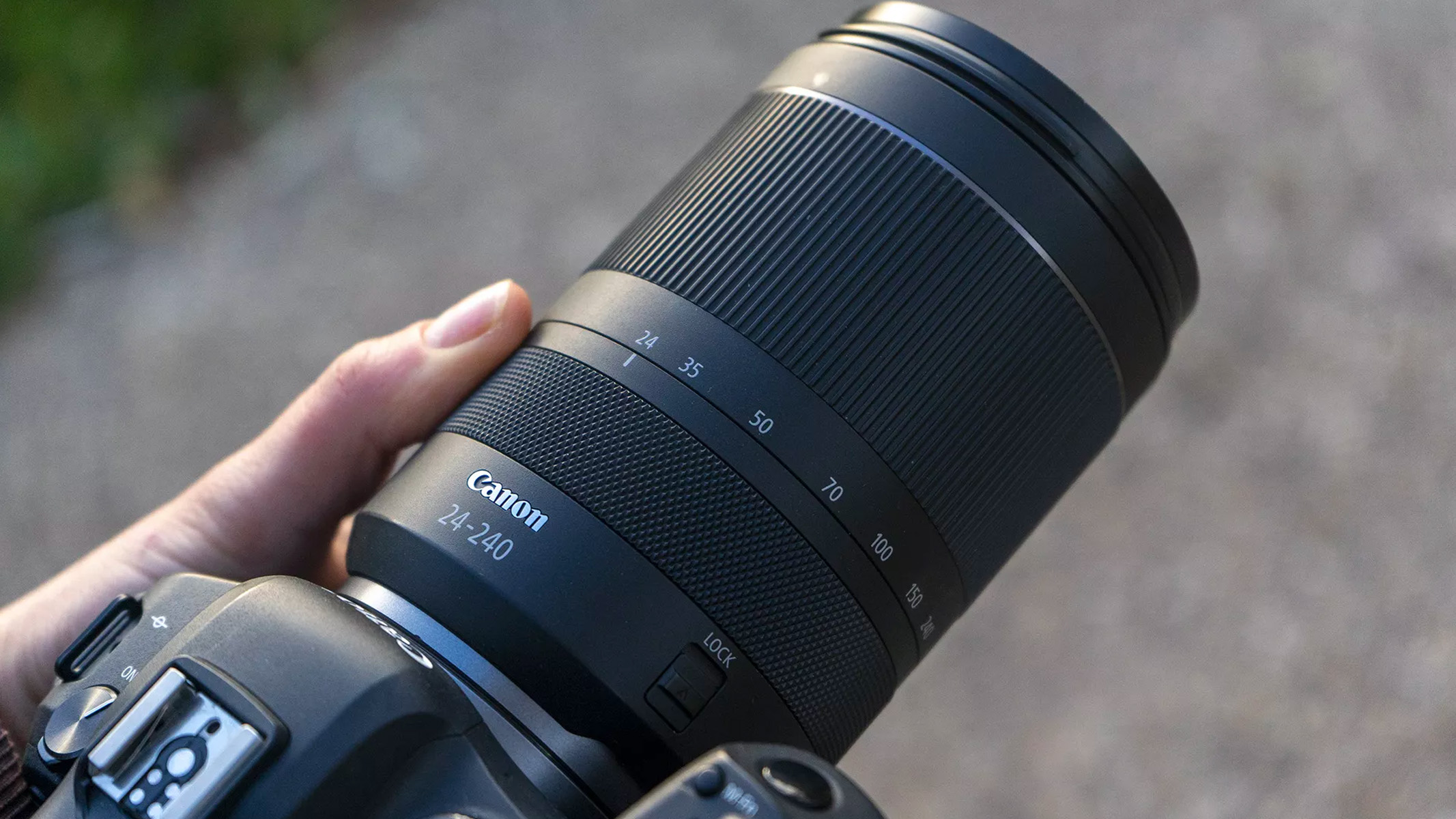
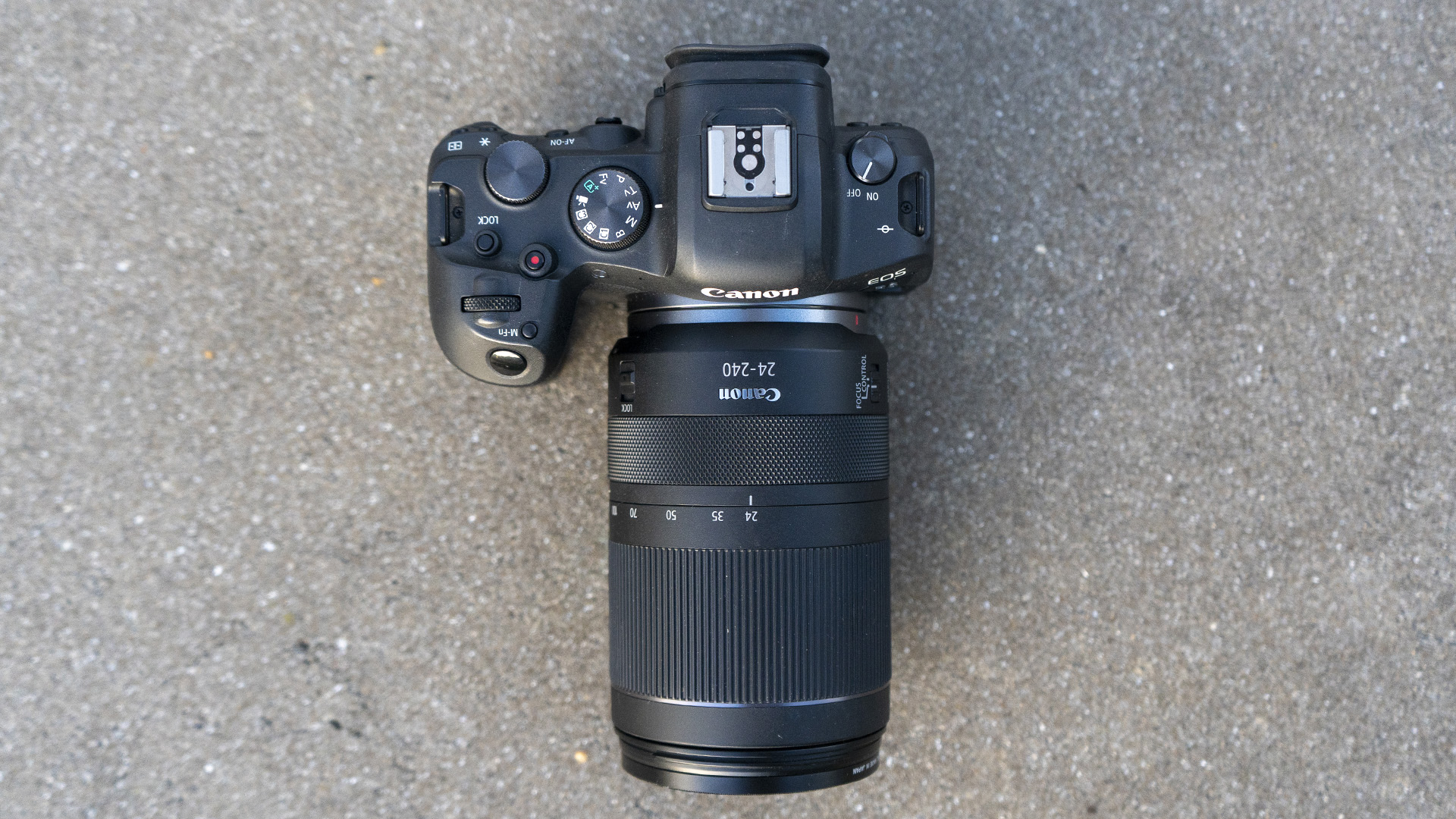
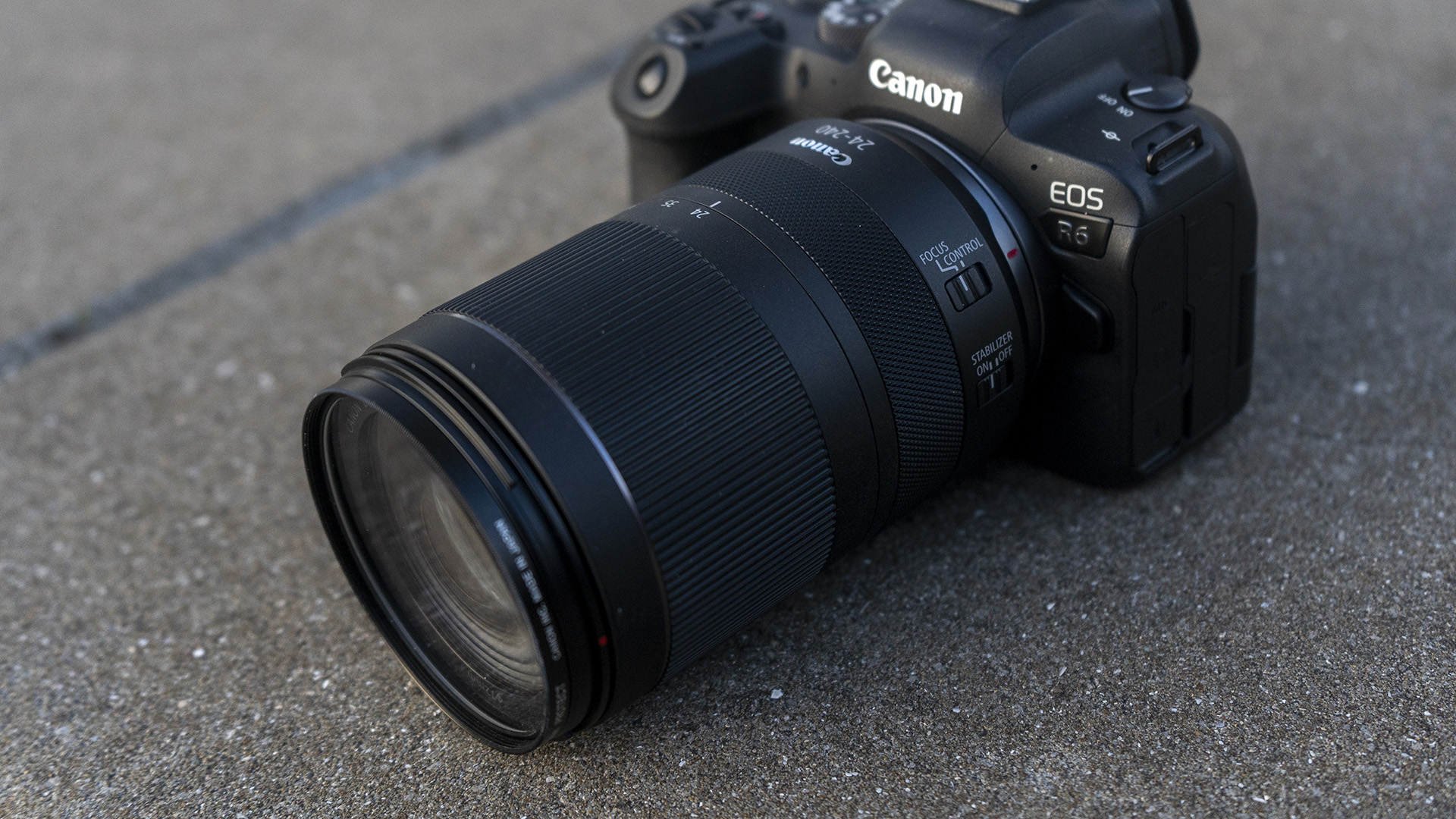

Specifications
Reasons to buy
Reasons to avoid
✅ You want a versatile lens: from travel to landscapes, this lens can do (almost) everything.
✅ You want a lightweight lens: at 1.7 lbs, this is one of the lighter options in this guide.
✅ You want a zoom and wide-angle lens: zoom in at 240mm, and zoom out at 24mm.
❌ You want an astro lens: for the same price, you can get a lens with a longer focal length.
❌ You often shoot in poor conditions: this lens is minimally weather-sealed.
❌ You only want the sharpest results: this lens does render some chromatic aberration.
🔎 The Canon RF 24-240mm f4-6.3 IS USM is undoubtedly a great choice if you’re the type of photographer who wants an all-in-one walkabout lens that can easily go from shooting a wide-angle to a telephoto view, but it does have some drawbacks. ★★★★
Design: Full-frame superzooms tend to be very big, but in our Canon RF 24-240mm f4-6.3 IS USM review, we thought it was nicely sized and reasonably lightweight. The controls on the lens barrel include a stabilizer on/off switch and a lock switch for the zoom, which is easy to find without taking your eye away from the viewfinder. The zoom ring has a rubberized texture for an easy grip, and the two-stage barrel extension moves in and out smoothly.
Performance: Typically, superzoom lenses like this one don't deliver exceptional image quality due to the trade-offs involved in achieving such a broad focal range. The results from the Canon RF 24-240mm f4-6.3 IS USM are decent but not consistently outstanding. When looking at unedited raw files, you'll notice noticeable distortion and vignetting, especially at the wider end of the focal range. While the center of the frame is reasonably clear at the widest aperture of f/4, image quality declines as you stop down the aperture.
Functionality: This lens has a nearly endless list of practical applications thanks to its excellent 10x zoom range, making it appealing to a wide range of different photographers. When zoomed in, 240mm is a true telephoto focal length, allowing you to shoot everything but the most ambitious wildlife or sports photography (where you'll need a wider aperture). Zoomed out, 24mm is a legitimate wide-angle, making it suitable for a variety of general-purpose travel photography. However, even though the Canon 24-240mm can hold its own when it comes to astrophotography, there are certainly better options out there in this budget range.
- Read our full Canon RF 24-240mm f4-6.3 IS USM review.
Attributes | Notes |
|---|---|
Design | Nicely sized and reasonably lightweight. |
Performance | Decent results, but not consistently amazing. |
Functionality | Jack of all trades, master of none. |
The best third-party telephoto
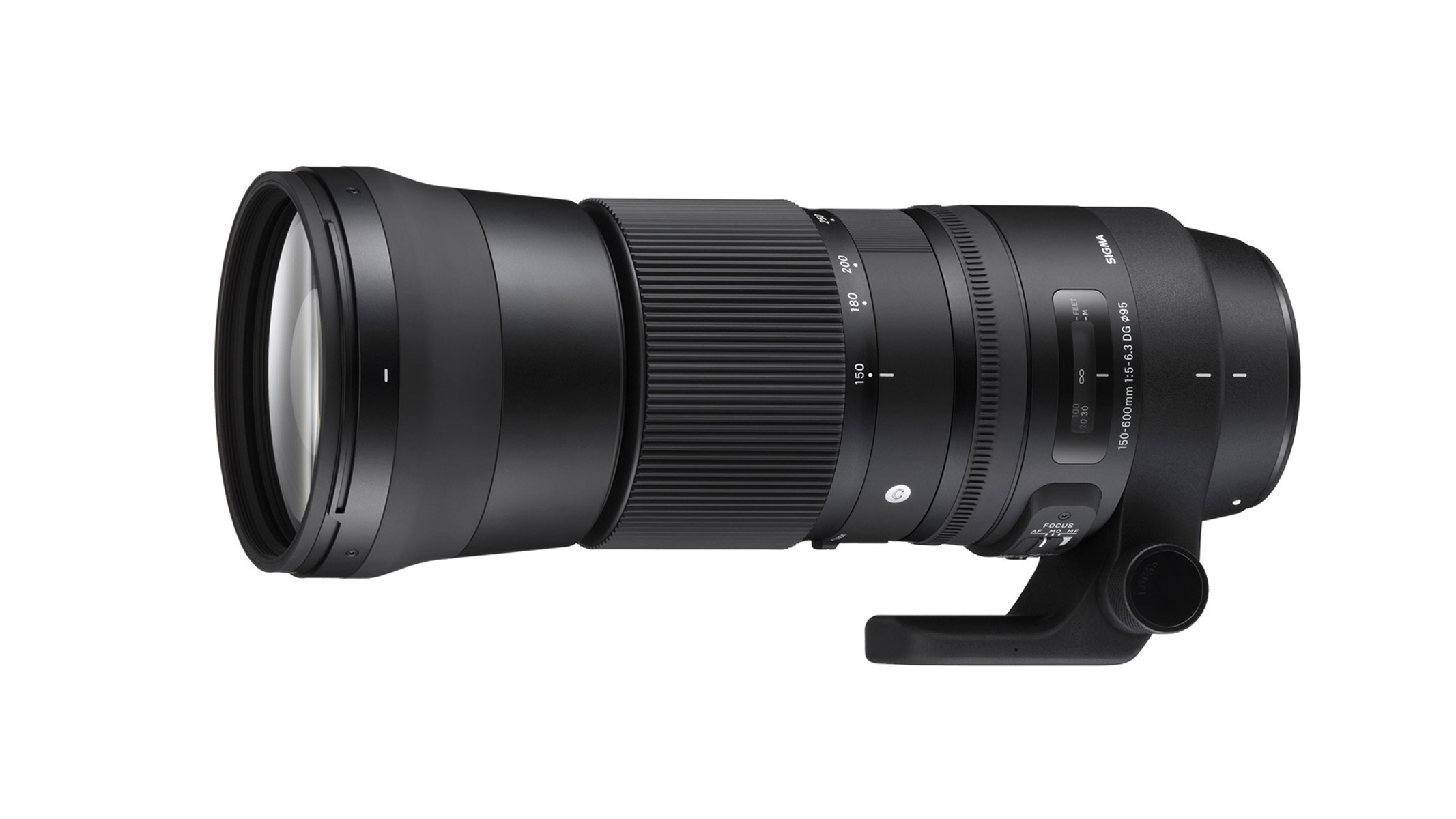

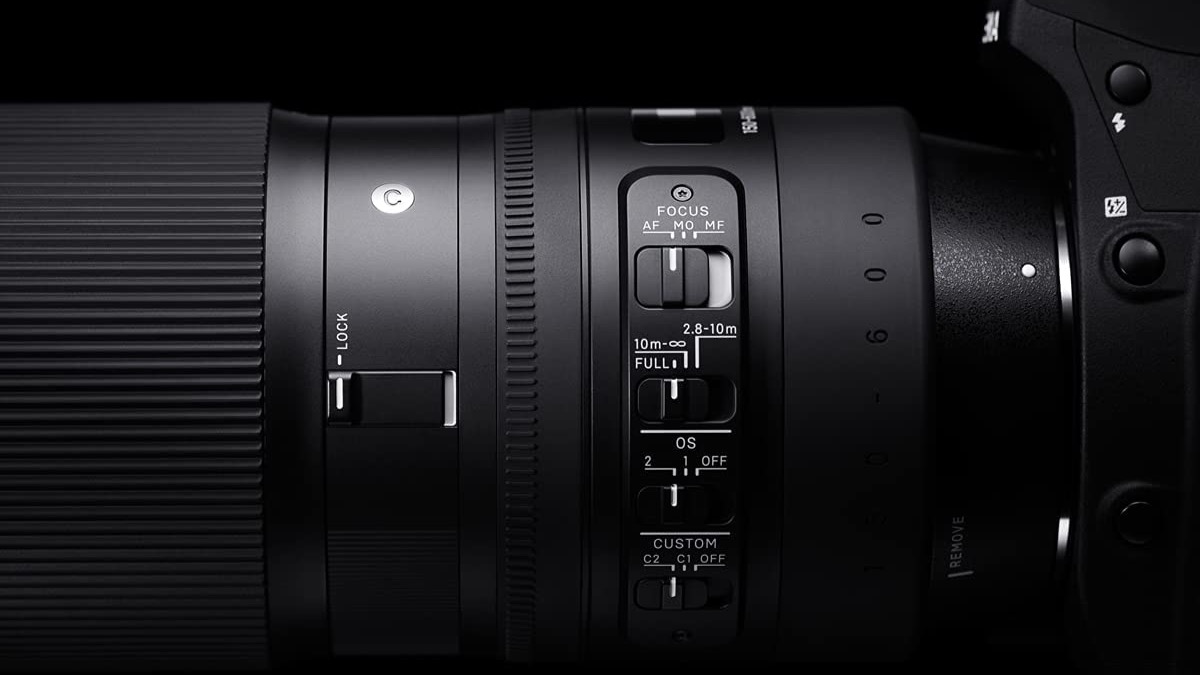
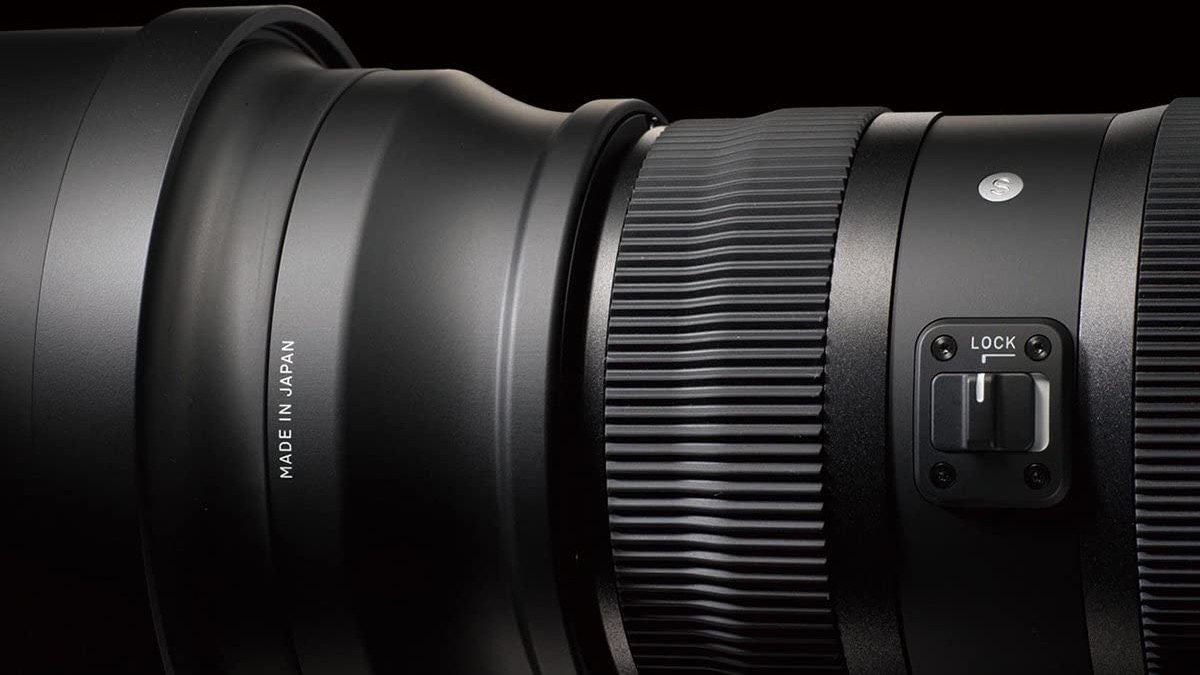
Specifications
Reasons to buy
Reasons to avoid
✅ You're on a budget: this lens is a lot cheaper than many of its competitors.
✅ You're after a long focal length: the 150-600mm range puts this lens up with the best zoom lenses.
✅ You want a versatile lens: from astro to travel photography, this lens can do it all.
❌ You want a lightweight lens: at over 4 lbs, there are lighter models to be found.
❌ You want an ultra-wide lens: the maximum zoomed-in aperture of f/6.3 can feel limiting.
❌ You want to shoot deep-sky astrophotography: you will need a quality star tracker and tripod to use this lens for far-away celestial objects.
🔎 The Sigma 150-600mm f/5-6.3 DG OS HSM is an extremely portable lens and the large zoom range allows you plenty of compositional options in many different photography styles. It performs well enough at the 600mm focal length if you want to use it for astrophotography. ★★★★
Design: With a maximum focal length of 600mm, it has the biggest focal range on our best zoom lenses list and is certainly long enough to handle deep sky astrophotography. In fact, it's at the long end of what's possible in a DSLR or mirrorless lens, period. On the downside, the heavy 4.2 lbs weight of this lens is something that we immediately noticed during our testing.
Performance: The performance is excellent, which we talk more about in our Sigma 150-600mm f/5-6.3 DG OS HSM review. It performs well enough at the 600mm focal length if you want to use it for astrophotography. It’s sharp, there are no geometry worries to speak of, and for the money (about $1200), there are very few lenses out there that offer this kind of bang per buck. Although some lens models can achieve a higher quality of image at this extremely long focal length, the cost of such a lens can be eye-watering.
Functionality: This lens offers several controls, and you can customize them even further using Sigma's USB Lens Dock. By default, you have the standard autofocus/manual focus/hybrid switch and a focus length limiter for adjusting the focus distance. However, the maximum aperture when fully zoomed in at f/6.3 can feel somewhat limiting, especially if you're used to ultra-wide, large-aperture photography. This means you'll often need to use higher ISO settings, longer shutter speeds, or both. Additionally, achieving steady results at the longer end of the lens will require a high-quality star tracker.
- Read our full Sigma 150-600mm f/5-6.3 DG OS HSM review.
Attributes | Notes |
|---|---|
Design | A noticeably heavy lens. |
Performance | Sharp and no geometry issues. |
Functionality | Competetive maximum aperture for a lens of this focal length. |
Best zoom lenses: Comparison
Product | Rating | Mount | Focal range | Aperture range | Filter thread size | Weight |
|---|---|---|---|---|---|---|
Sony FE 200-600mm f/5.6-6.3 G Master OSS | ★★★★½ | Sony E-mount | 200-600mm | f/5.6-6.3 | 95mm | 4.7 lbs (2.1kg) |
Nikon Nikkor Z 70-200mm f/2.8 S | ★★★★½ | Nikon Z-mount | 70-200mm | f/2.8 constant | 77mm | 3.1 lbs (1.4kgs) |
Nikon Nikkor AF-S FX 70-200mm f/2.8 FL-ED VR | ★★★★½ | Nikon F-mount | 70-200mm | f/2.8 constant | 77mm | 3.1lbs (1.4kgs) |
Nikon AF-S FX NIKKOR 200-500mm f/5.6E ED VR | ★★★★½ | Nikon F-mount | 200-500mm | f/5.6 constant | 95mm | 5.1 lbs (2.3kgs) |
Canon RF 28-70mm f/2L USM Lens | ★★★★½ | Canon RF-mount | 28-70mm | f/2 constant | 95mm | 3.15 lbs (1.4kgs) |
Canon RF 70-200mm f/2.8L IS USM | ★★★★½ | Canon RF-mount | 70-200mm | f/2.8 constant | 77mm | 2.4 lbs (1.1kg) |
Sony FE 70-200mm f/2.8 G Master OSS II | ★★★★½ | Sony E-mount | 70-200mm | f/2.8 constant | 77mm | 2.3 lbs (1kg) |
Sony E 16-55mm f/2.8 G | ★★★★ | Sony E Mount (APS-C) | 16-55mm | f/2.8 constant | 67mm | 1.08 lb (494g) |
Sigma 70-200mm f/2.8 DG OS HSM | ★★★★ | Sigma SA-mount, Canon EF-mount, Nikon F-mount | 70-200mm | f/2.8 constant | 82mm | 4 lbs (1.8kgs) |
Canon RF 24-240mm f/4-6.3 IS USM | ★★★★ | Canon RF-mount | 24-240mm | f/4-6.3 | 72mm | 1.7 lbs (771g) |

Kimberley Lane is a landscape & seascape photographer living in South Wales. Originally using photography as a way to cope with health issues, she aims to portray a feeling of calm and peace through her images. Her work has been featured in a number of national photography magazines.
Best zoom lenses Frequently Asked Questions
What is the best zoom lens?
According to our expert reviewers, the best zoom lens overall is the Nikon Nikkor Z 70-200mm f/2.8 S. Obviously, we also think it's the best Nikon zoom lens.
However, if you're looking for a Sony zoom lens in particular, the best is the Sony FE 200-600mm f/5.6-6.3 G Master OSS, while the best Canon zoom lens is the Canon RF 28-70mm f/2L USM Lens and the best third-party zoom lens is Sigma 70-200mm f/2.8 DG OS HSM.
For wide-field astrophotography, we recommend a wide-angle zoom lens, which enables you to capture the stars in the night sky as well as some foreground. Telephoto zoom lenses, on the other hand, are best suited for deep-sky objects, and you can use them in conjunction with the best star trackers
Should I buy a lens with image stabilization?
Image stabilization is a great tool for handheld shooting (whether that's stills or video) as it provides extra support in steadying the frame and reducing blur caused by shaking.
In astrophotography however, it's perhaps not essential, as you'll always be shooting on a tripod which reduces the need for extra image stabilization. If that's the case, you can save yourself some money and opt for a less that doesn't have that (often costly) feature.
It's worth noting that while Canon uses the term Image Stabilization (IS), Nikon calls it Vibration Reducation (VR), Sony has an Optical Stabilizer (OS) and Optical SteadyShot (OSS).
Should I buy a telephoto or wide-angle zoom lens?
The answer to that question depends depends on what you want to shoot. Telephoto lenses are great for deep-sky object photography and can be combined with a star tracker to produce incredible images of galaxies and other celestial objects.
However, if you're looking to photograph the night sky while including a foreground landscape, you'll want to opt for a wide-angle zoom lens. Wide-angle zooms are easier to focus as the stars are so much smaller on their sensor.
Zoom lens vs prime lens: Which should I buy?
Zoom lenses offer more flexibility in composition because it won't require you to remove or add space around your subject. As such, it's great for landscapes or astrophotography where photographers would otherwise have to 'compose with their feet' by physically moving the camera long distances.
Prime lenses are less versatile, but they tend to be lighter than zoom lenses because the latter require more glass to account for the change in focal length. The best prime and zoom lenses offer results of comparable quality, but prime lenses can usually open to a wider aperture of f/1.4 or even f/0.9. This makes them great for low-light shooting where the aim is to maximize light into the sensor. It's also desirable for astrophotography, but only to a limit. Too wide an aperture can cause diffraction, blurring or vignetting around the edges of the frame from the extremely shallow depth of field, which looks nice on a portrait but not so much on a star-studded sky you're trying to get really sharp.
What's the best aperture for a zoom lens?
Aperture refers to the adjustable hole in the lenses through which light passes: the bigger it is, the more light can get through at once. The aperture has a a relational effect on shutter speed (how sharp your image is) and ISO (how sensitive your sensor is and how noisy your image is).
Aperture sizes are described as f-stops, with an f/2.8 aperture being much bigger than an f/5.6 aperture. For astrophotography, we recommend going for a lens with the biggest aperture you can afford, especially if you're planning to shoot long-exposure tracked shots.
If you're just aiming to shoot simple pictures of the moon, you can get away with cheaper lenses with smaller apertures as the moon reflects so much light.
What else should I know before buying a zoom lens?
When looking for the best zoom lens with a long focal length (i.e. more magnification), you need to know a few things before you start. Focal length is measured in millimeters; the more you have, the longer your lens is — the closer to the action you can get.
Telephoto lengths start at around 70mm, and super-telephoto is generally regarded as anything longer than 400mm. So, if a lens has a focal length of 70-300mm, it starts with a reasonable amount of magnification (a little more than the normal human field of view) and can zoom in to 300mm, which is a significant amount of magnification.
There are a few other factors to consider as well when shopping for the best zoom lenses. Aperture size is a really important one — the aperture is the adjustable hole in the lens that light passes through, and the bigger it is, the more light can get through at once, with a relational effect on shutter speed (how sharp your image is, in simple terms) and ISO (how sensitive your sensor is and how noisy your image is).
Aperture sizes are described as f-stops, with an f/2.8 aperture being much bigger than an f/5.6 aperture. For night photography we recommend going for a lens with the biggest aperture you can afford, especially if you're planning to shoot long-exposure tracked shots. For simple pictures of the moon, you can get away with cheaper lenses with smaller apertures as the moon reflects so much light.
When looking at the best zoom lenses, you also need to consider image stabilization, also known as IS, VR (Vibration Reduction), OS (Optical Stabilizer), and OSS (Optical SteadyShot). This can be worth its weight in gold if you’re planning to shoot images at night without a tripod, as the lens will detect tiny amounts of movement and move its glass elements within to keep your image steady.
Finally, those looking for equipment that will travel long distances in a camera backpack — or be used on a star tracker system — should be wary of weight. There's the obvious — a big, heavy, long focal length lens with image stabilization and a big aperture will be more exhausting to carry — but if you want to use your lens for deep-space photography on a motorized star tracking system, you'll need to be watchful of how much your lens and camera weigh together, and consider if your star tracker can handle the extra baggage.
Update log
Editor's note 4/16/25: Updated to add information about April's new moon and galaxies.
How we test the best zoom lenses
How we test the best zoom lenses
To guarantee you're getting honest, up-to-date recommendations on the best lenses to buy here at Space.com we make sure to put every camera lens through a rigorous review to fully test each product. Each lens is reviewed based on a multitude of aspects, from its construction and design, to how well it functions as an optical instrument and its performance in the field.
Each lens is carefully tested by either our expert staff or knowledgeable freelance contributors who know their subject areas in depth. This ensures fair reviewing is backed by personal, hands-on experience with each lens and is judged based on its price point, class and destined use. For example, comparing a 150-600mm superzoom telephoto lens suitable for a full-frame camera to a sleek little wide-angle prime destined for a crop sensor wouldn’t be appropriate, though each lens might be the best-performing product in its own class.
We take a look at how easy each lens is to operate, how up-to-date the technology is and also the weight of the model. Where appropriate, we'll also include suggestions for additional kit that a particular lens may benefit from, to give the best viewing experience possible.
With complete editorial independence, Space.com are here to ensure you get the best buying advice on camera lenses, whether you should purchase one or not, making our buying guides and reviews reliable and transparent.
Breaking space news, the latest updates on rocket launches, skywatching events and more!

Kimberley Lane is a landscape & seascape photographer living in South Wales. Originally using photography as a way to cope with health issues, she aims to portray a feeling of calm and peace through her images. Her work has been featured in a number of national photography magazines.
- Mina FrostContributing writer
- Chris McMullenContributing Writer
- Tantse WalterContributing Writer
- Harry BennettE-commerce Staff Writer
- Jase Parnell-BrookesManaging Editor, e-commerce
